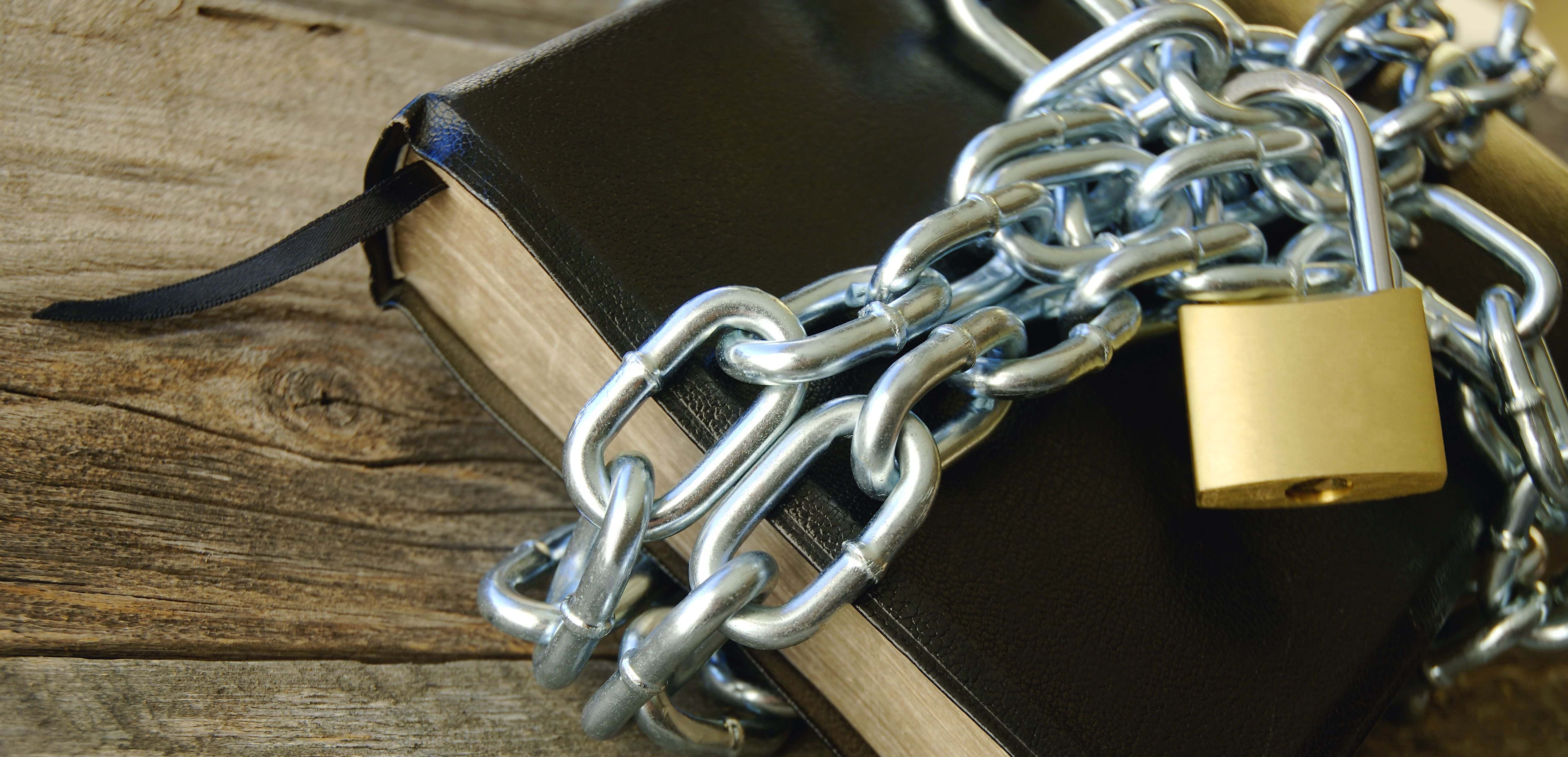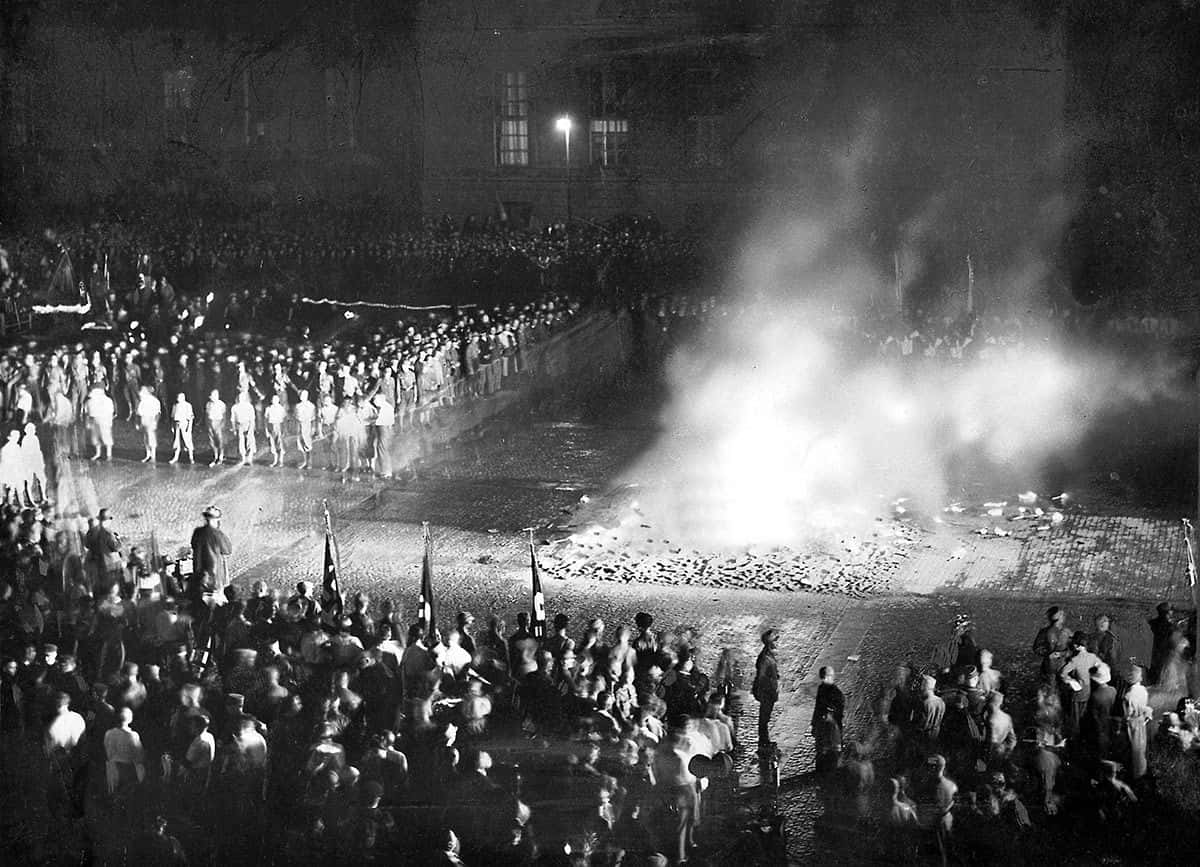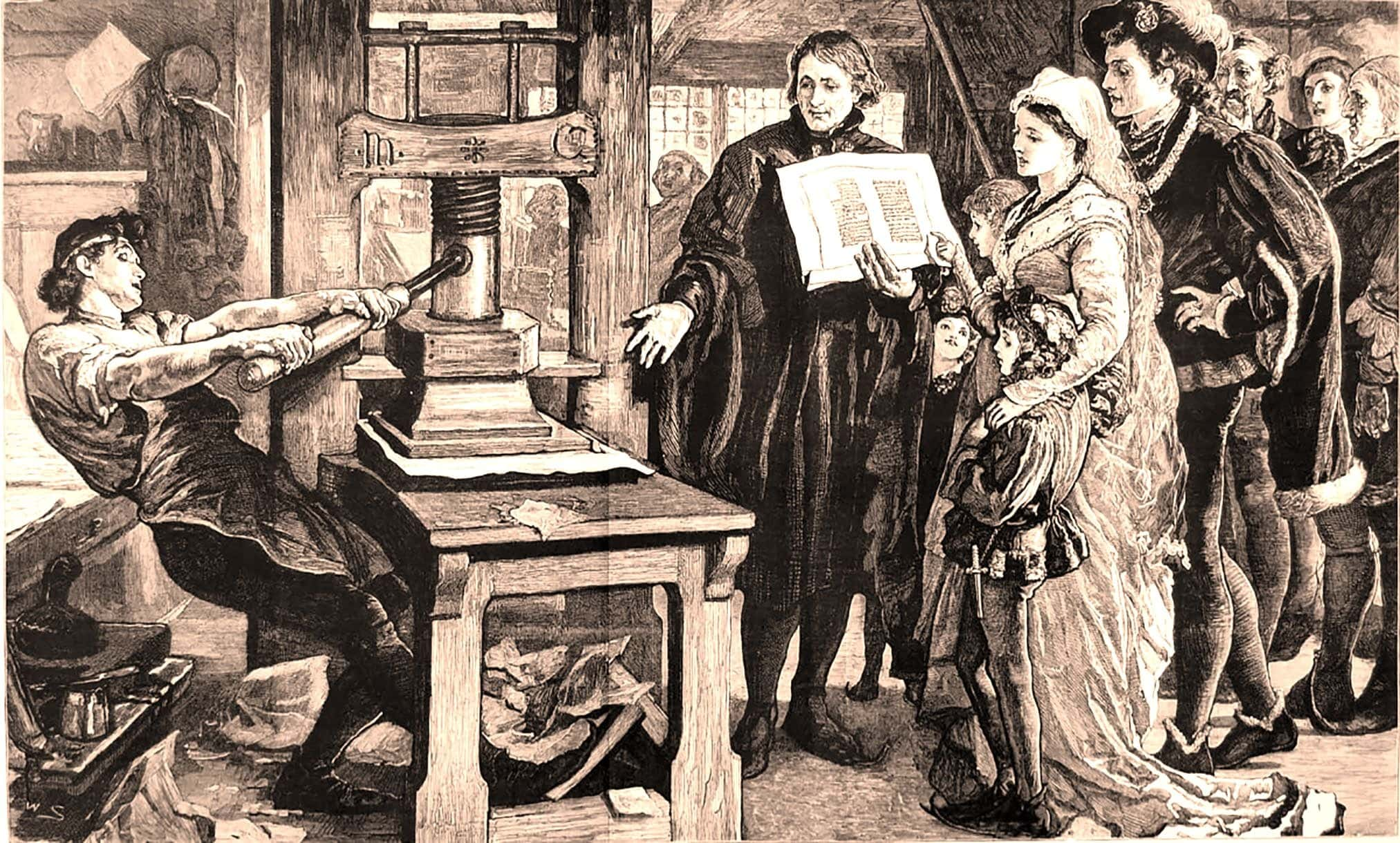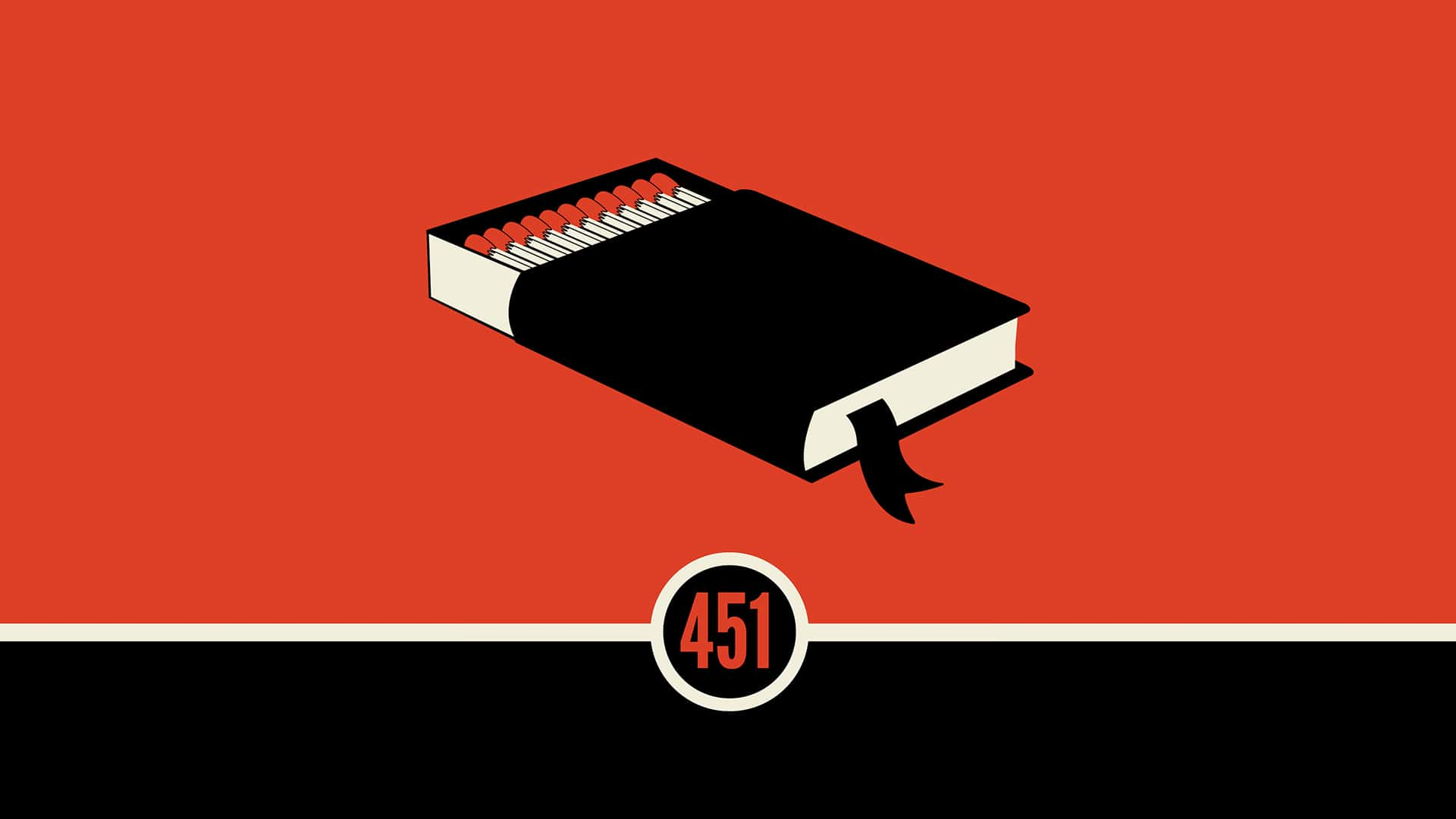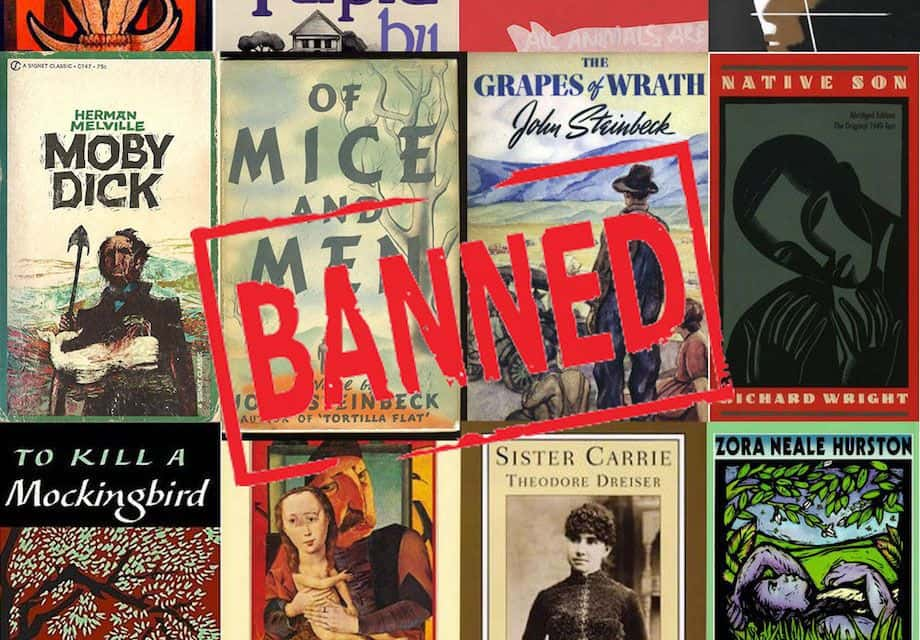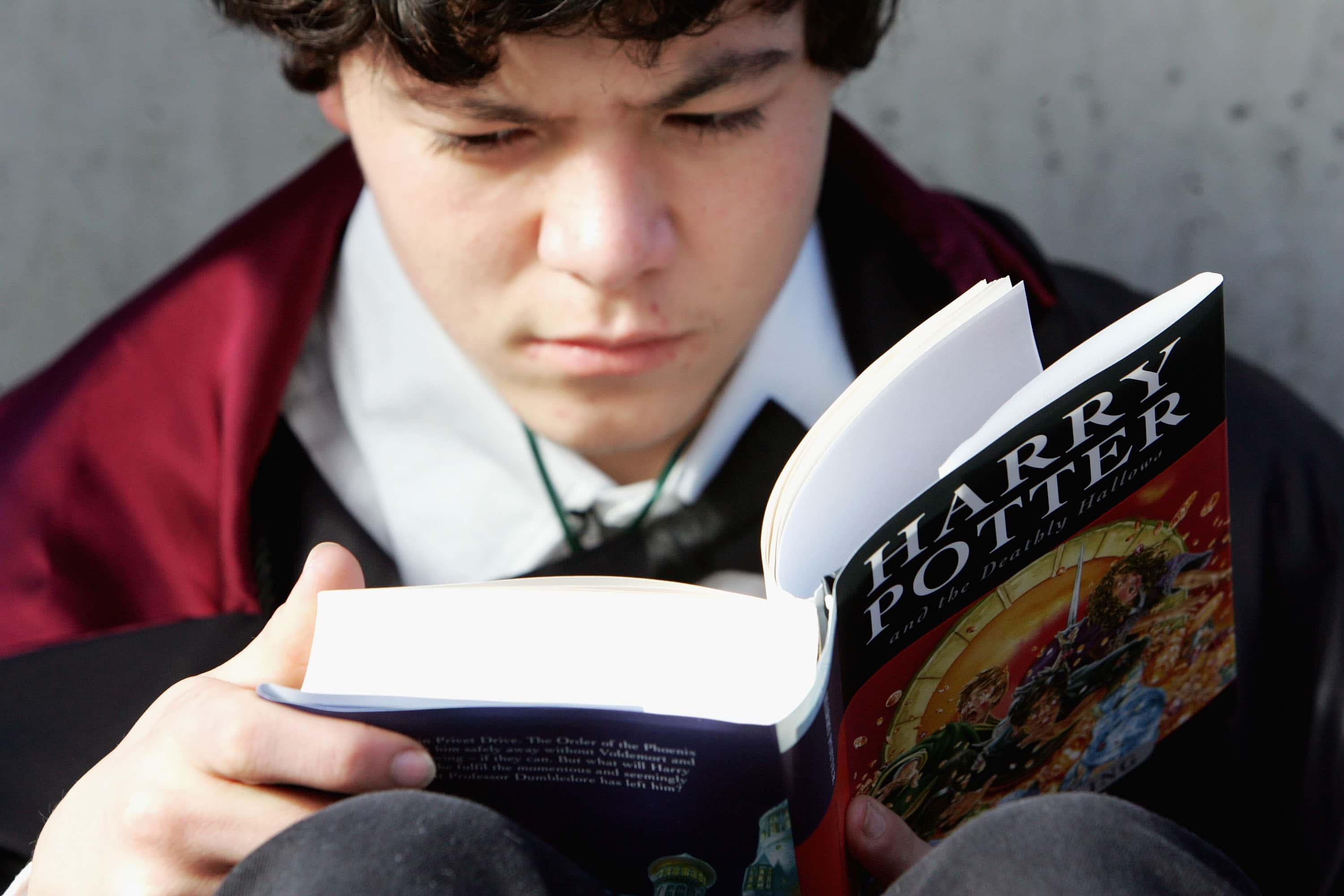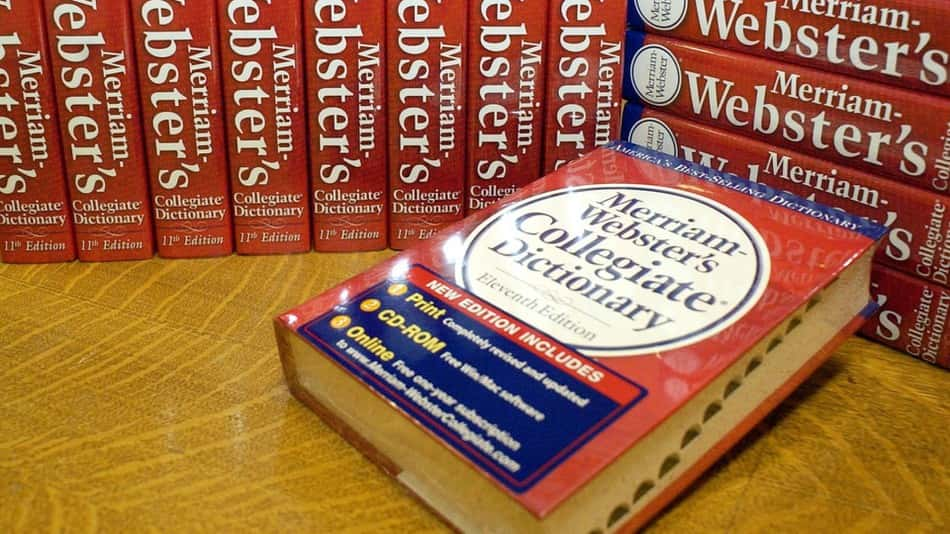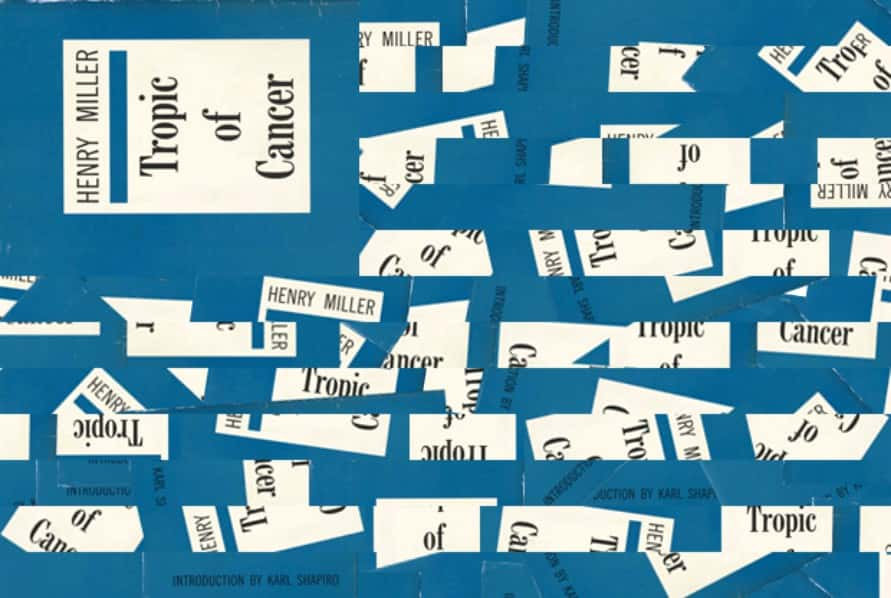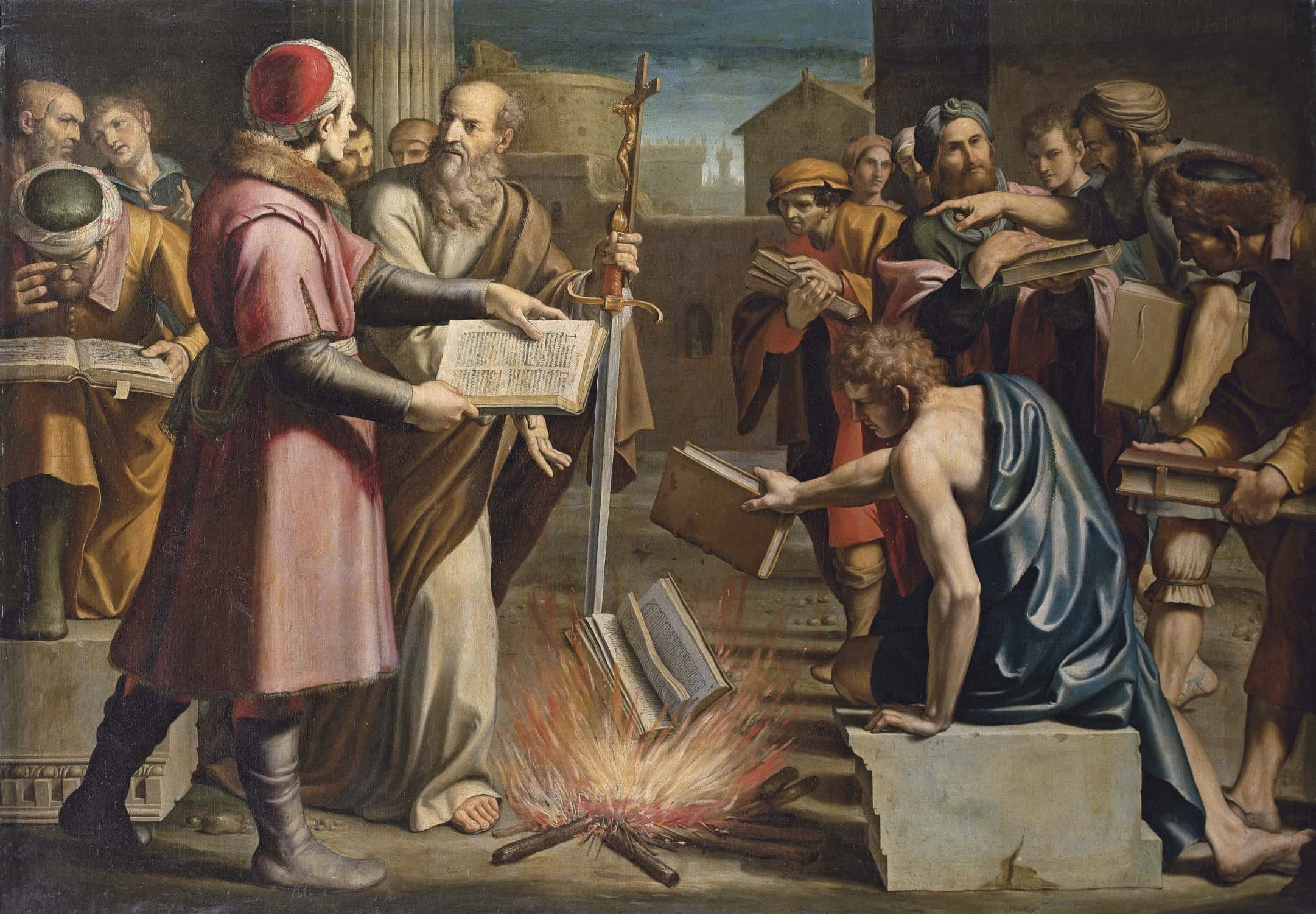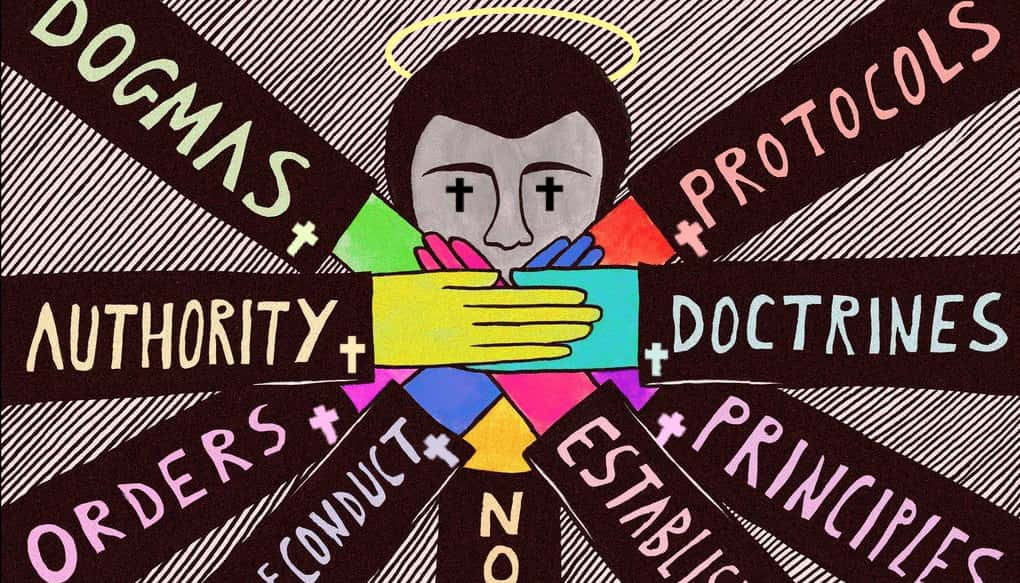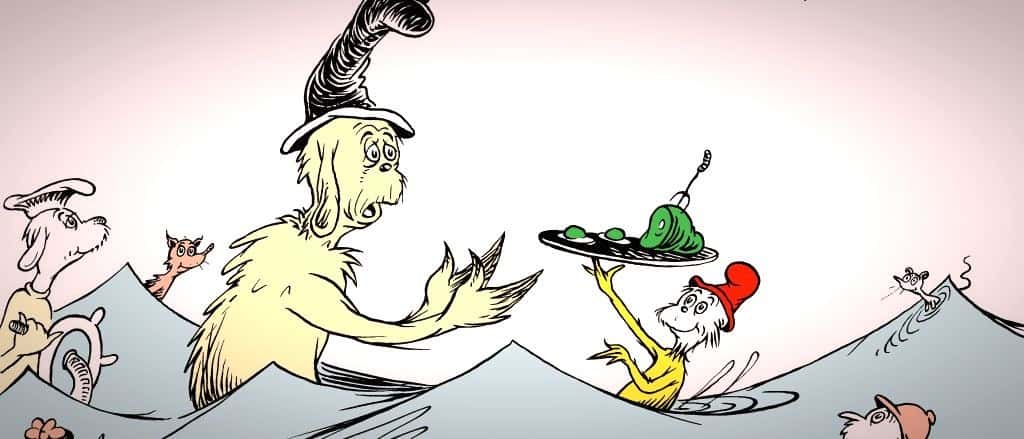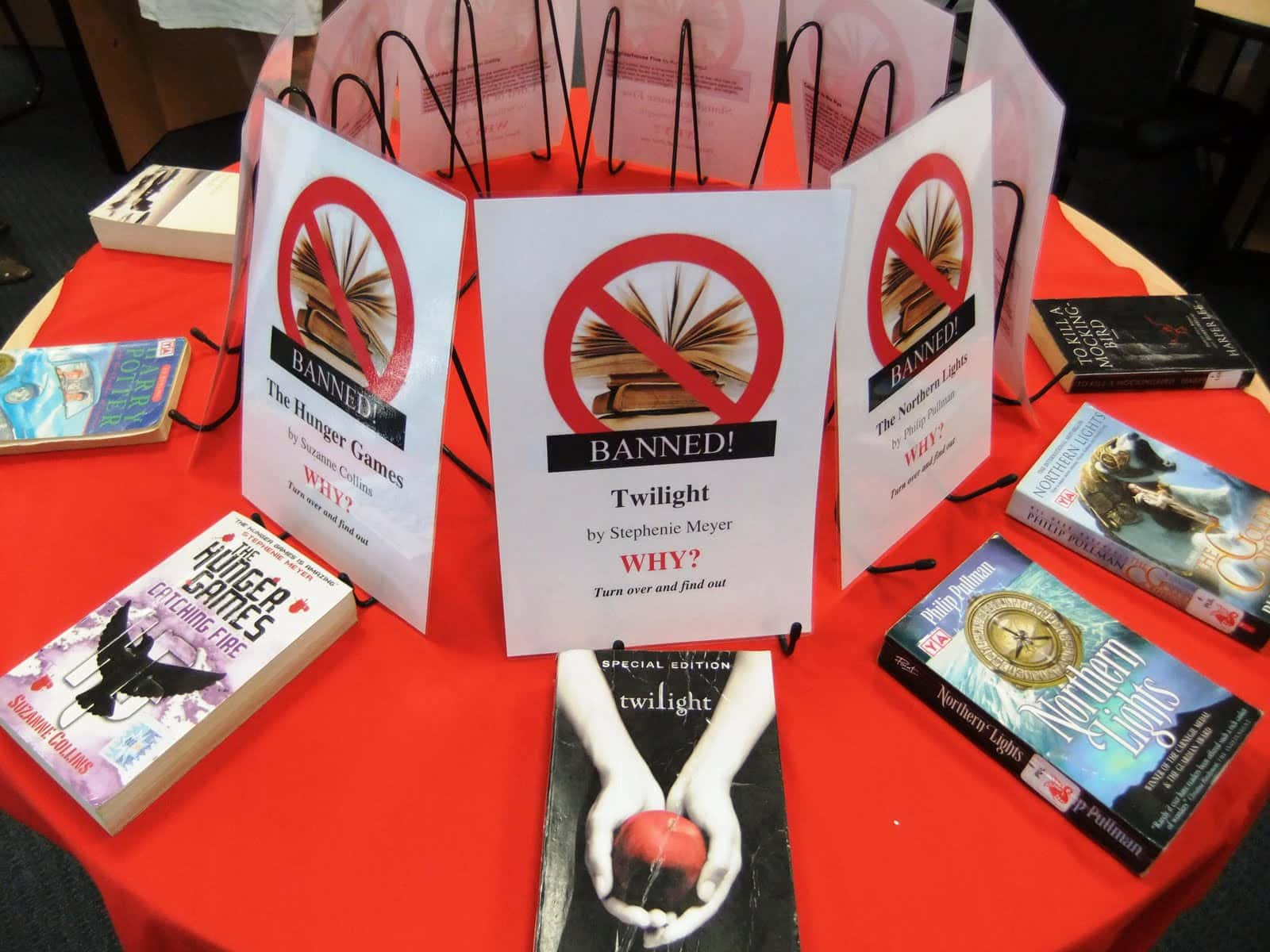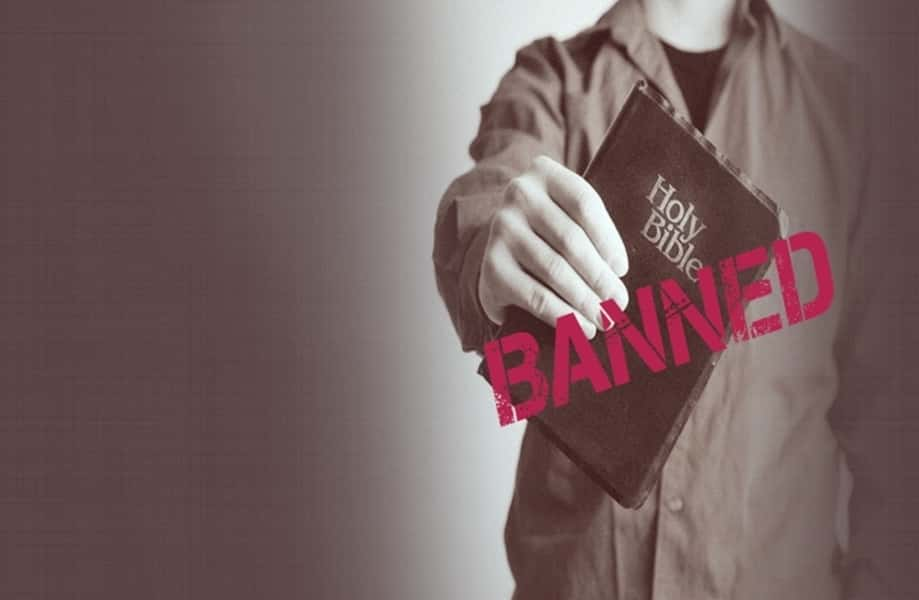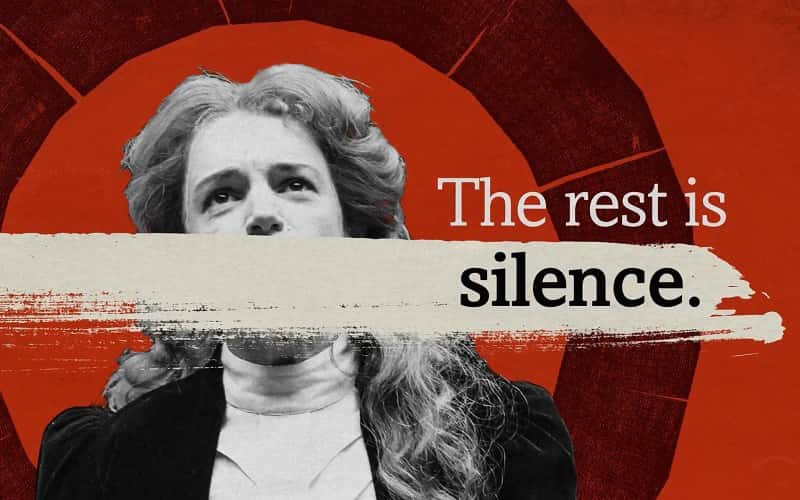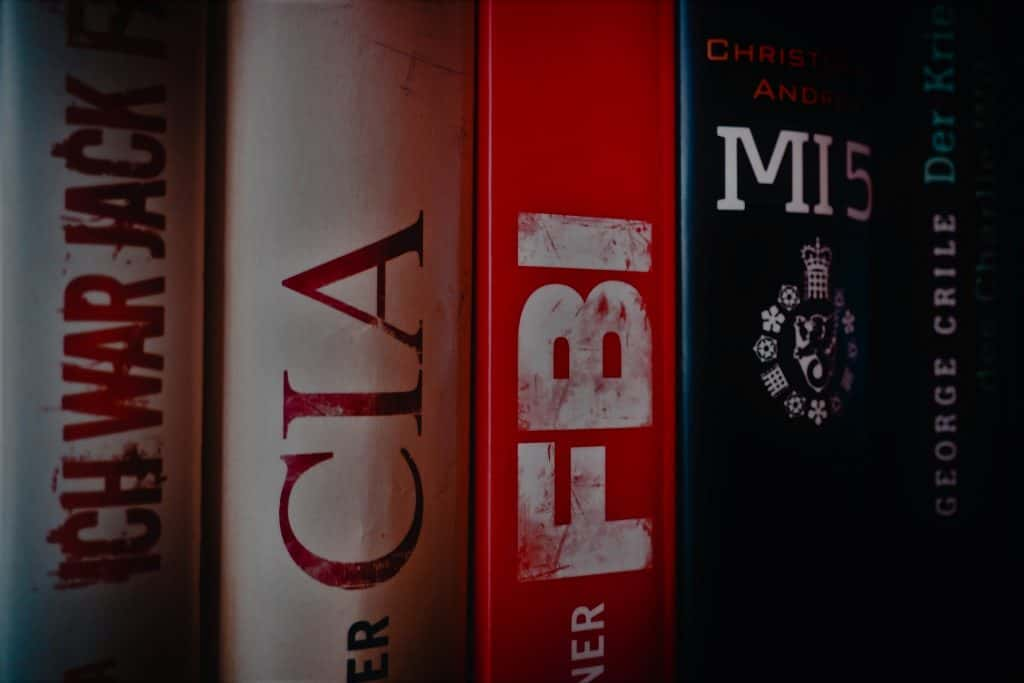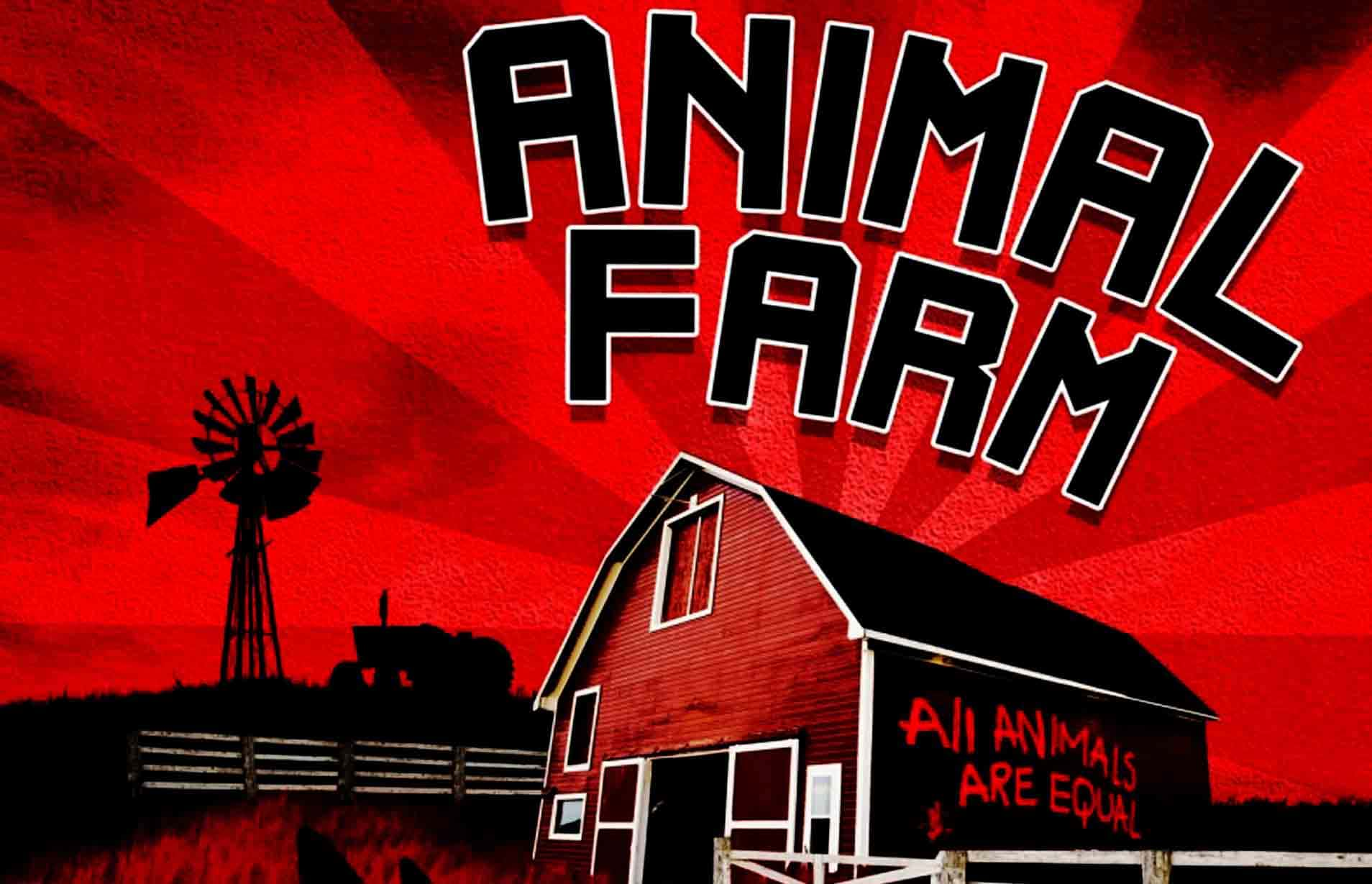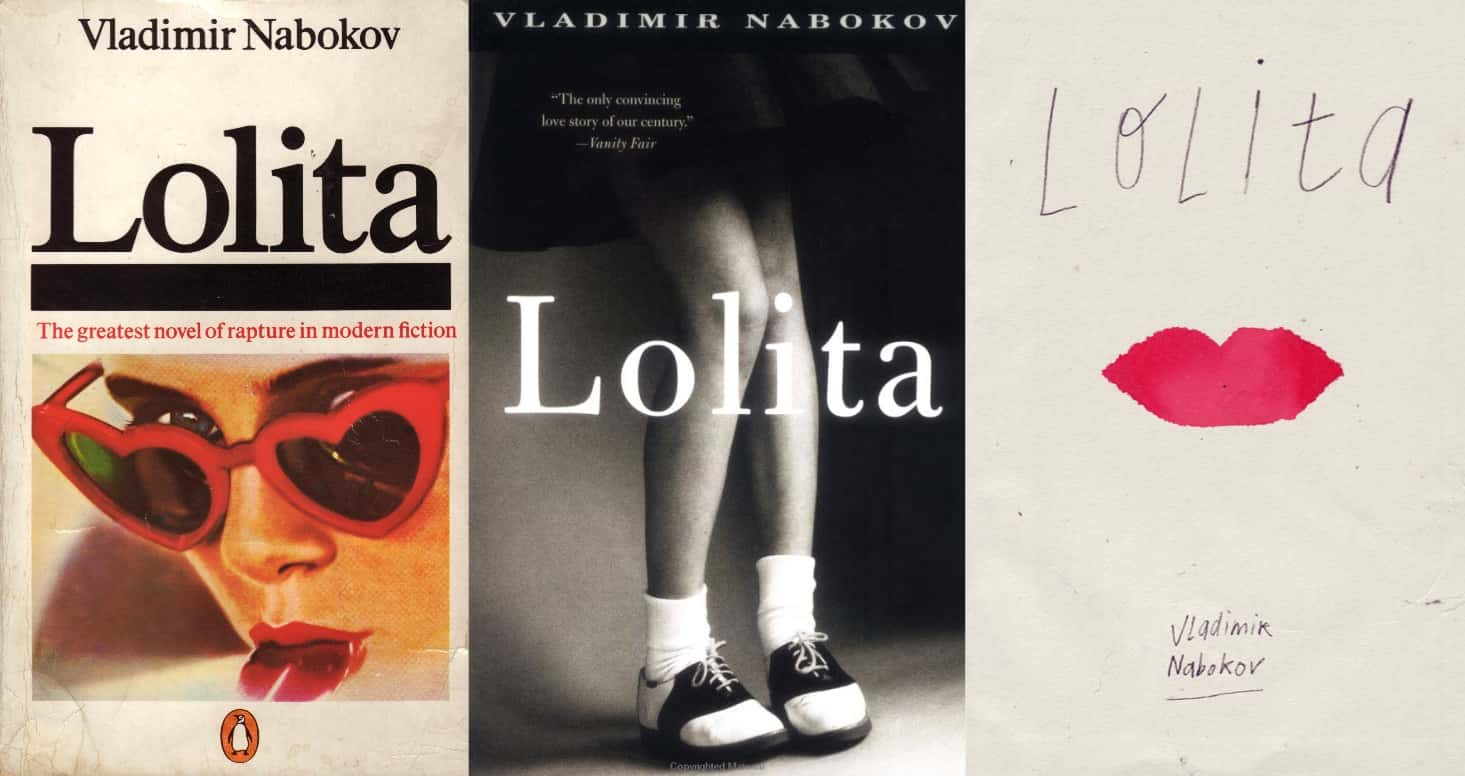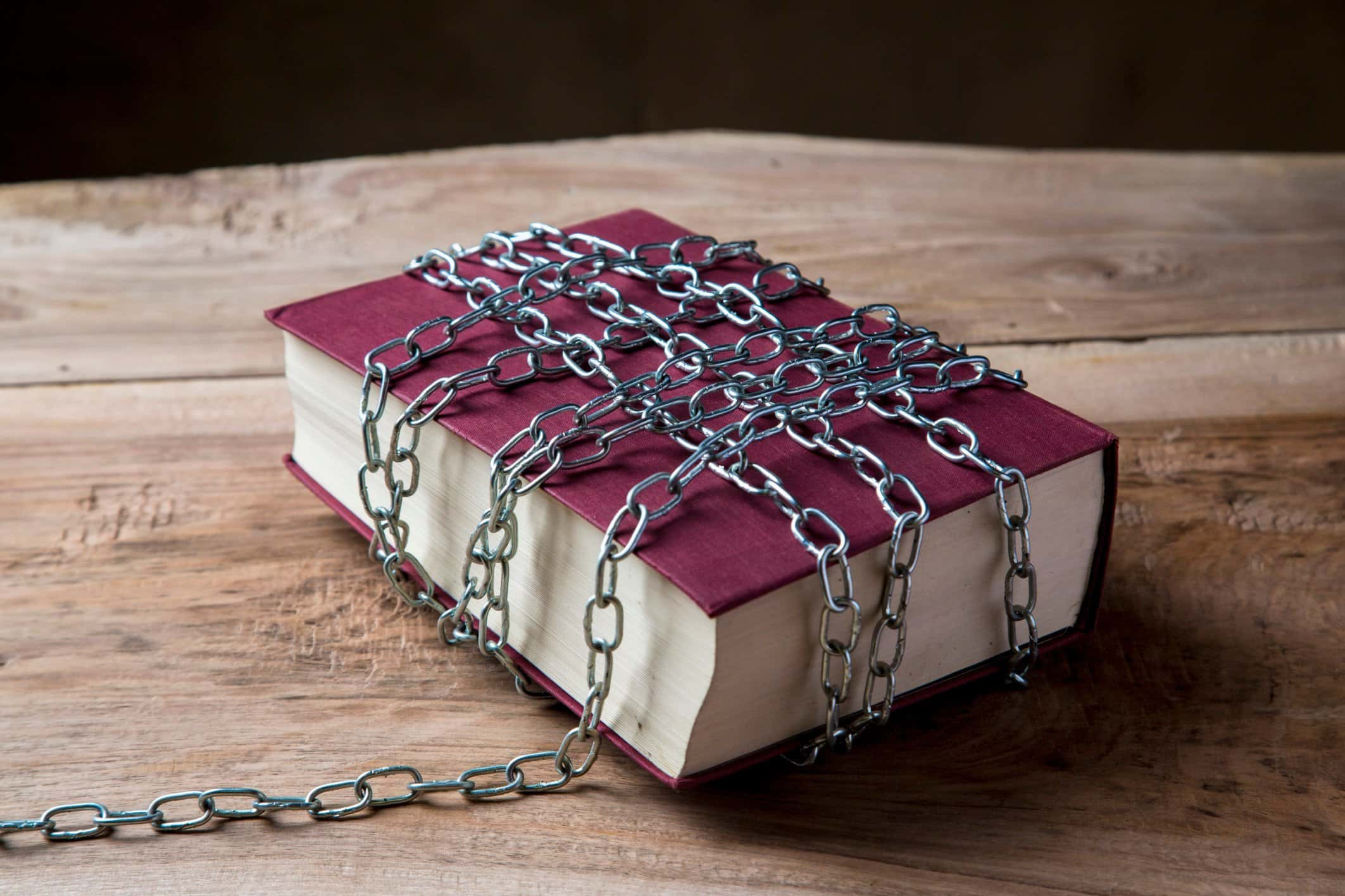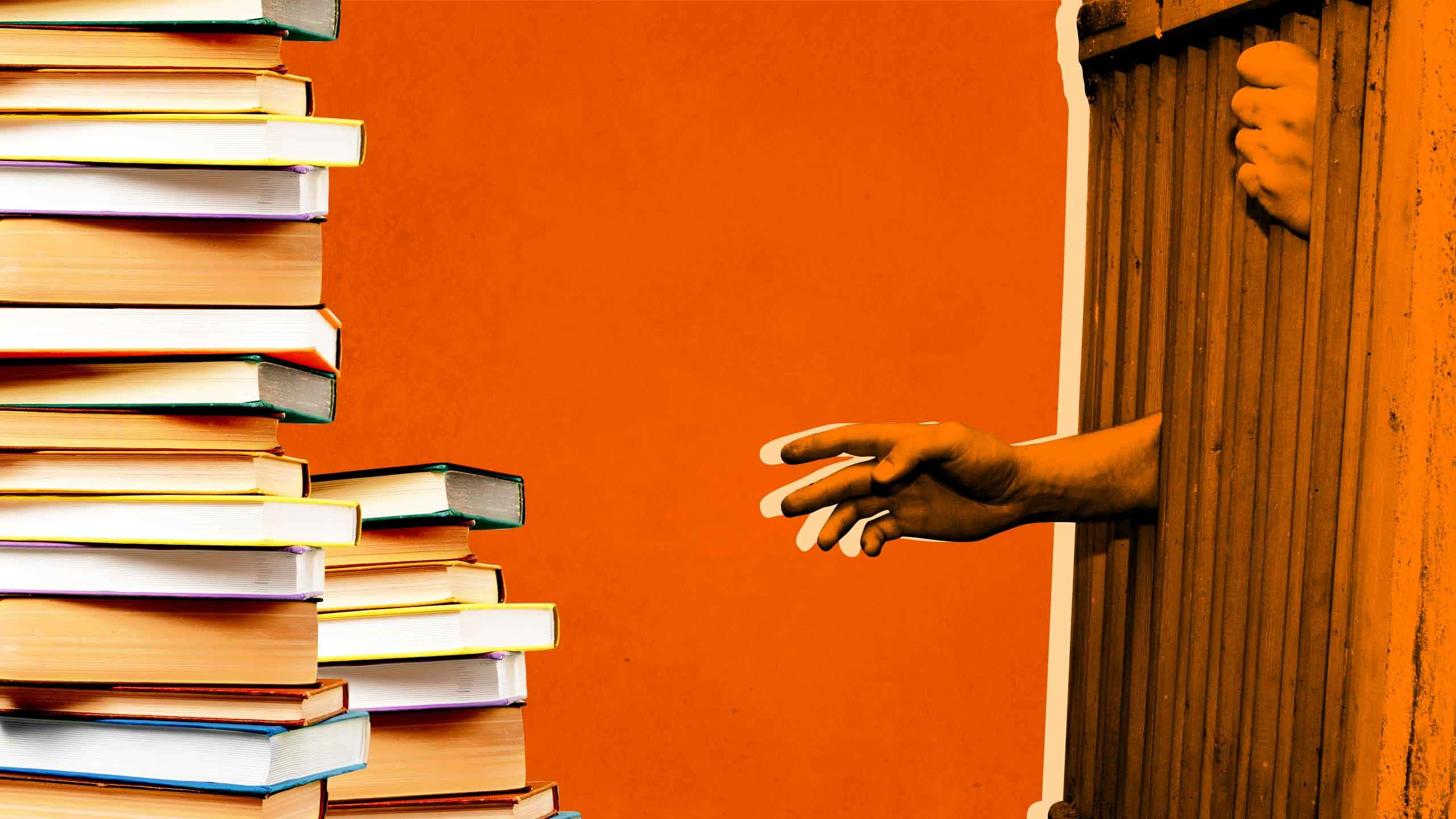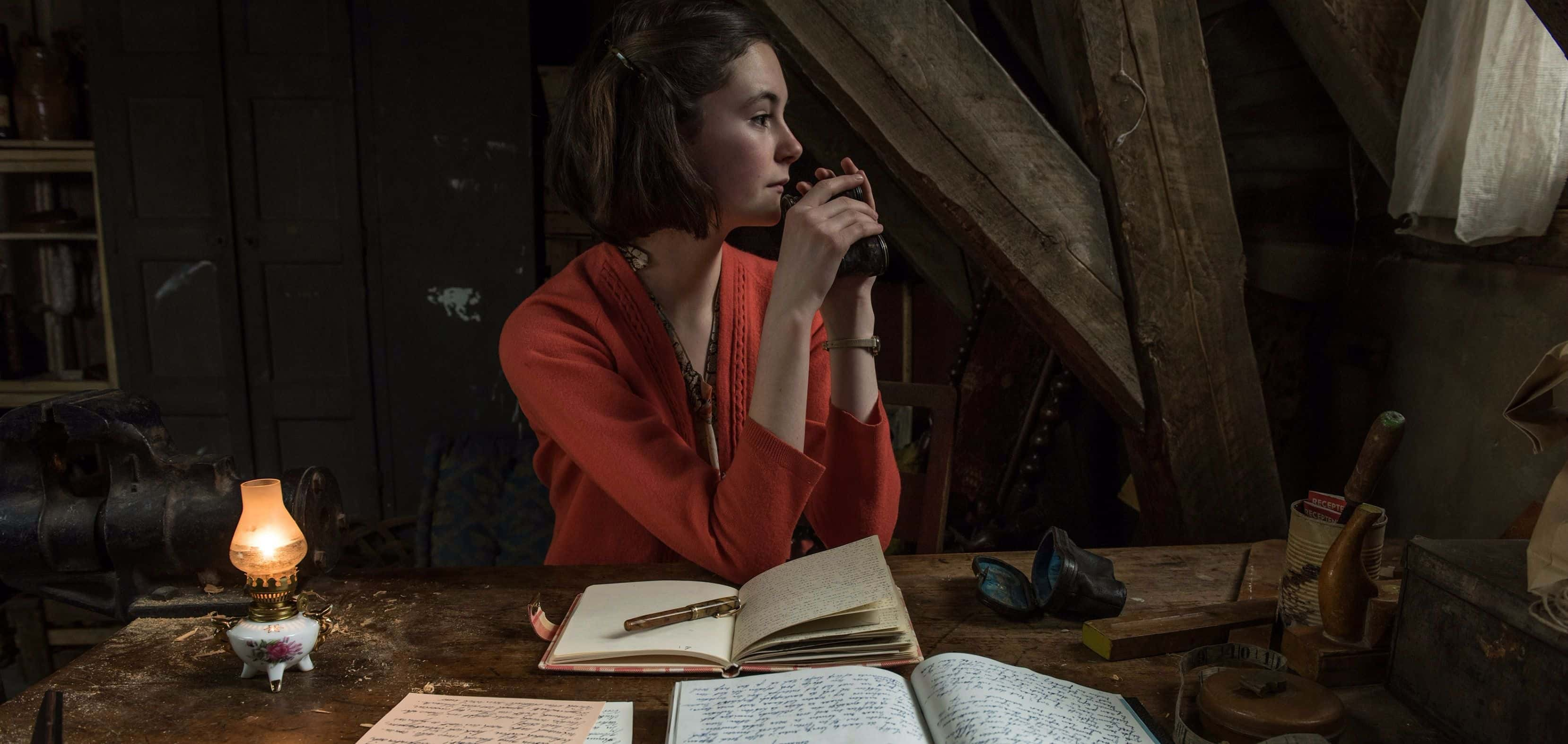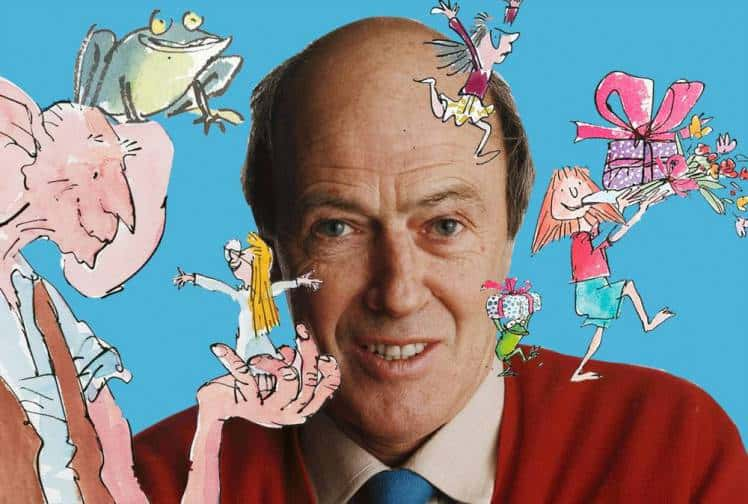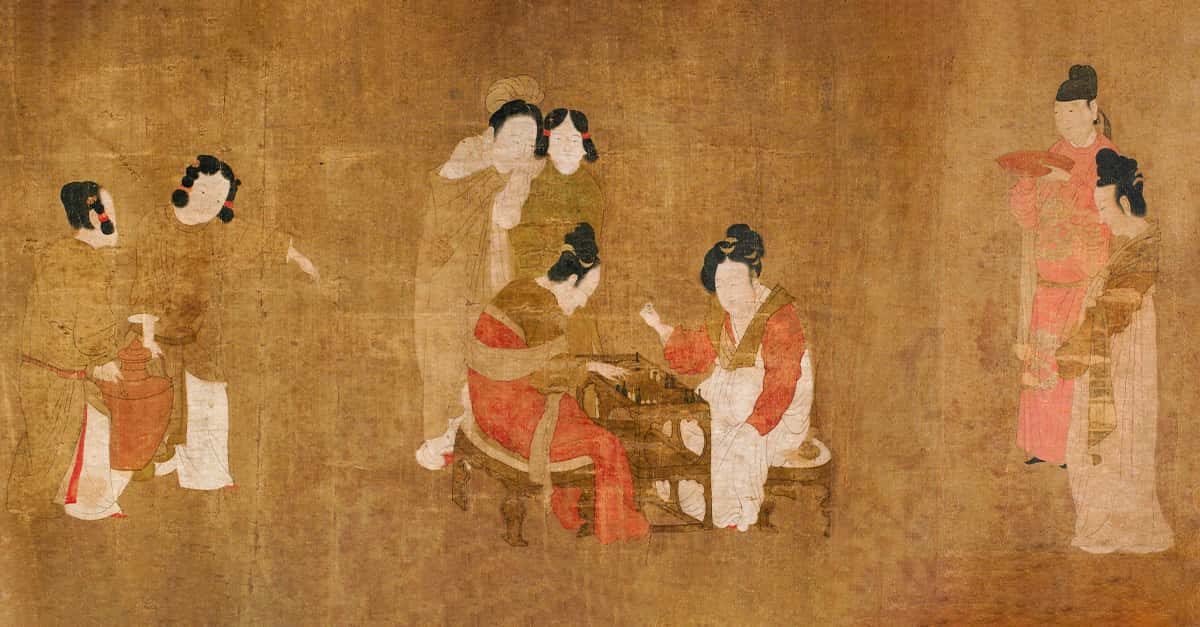“There is more than one way to burn a book. And the world is full of people running about with lit matches.”—Ray Bradbury
Books are our windows onto other worlds; eye-opening and mind-expanding, they can be educational even when they don’t intend to be—so it’s always surprising to learn when a book has been banned, for whatever the reason. Marshall University Libraries defines a banned book as “one that has been removed from a library, classroom, etc..” for content that is considered to be controversial or offensive. There can be any number of reasons why a book gets banned, including social, political, sexual, religious, safety, or parental. Whatever the reason, banning books is considered a form of censorship. What should be an action we look back on as a regretful part of history continues to happen to this day, all around the world. Here are 42 uncensored facts about banned books.
42. Smuggling in Timbuktu
When you hear Timbuktu, you probably picture the modern application of the word which is generally used to describe a place in the middle of nowhere, but from the 13th to 16th centuries, it was like the Oxford of Central Africa, and traders arrived with Islamic texts from all over the Muslim world. The texts survived hundreds of years of invasions and occupations, but all that nearly changed in 2012 when Al-Qaeda set out to destroy anything that contradicted their interpretation of Islam.
Worried that their collection of priceless manuscripts would be next on the list for destruction, librarian Abdel Kader Haidara organized a plot to smuggle 350,000 manuscripts out of the city. First, they packed them in boxes and moved them by donkey cart under the cover of night to people’s homes. A couple of months later, they used vehicles to smuggle them across 600 miles of desert and out of the city. The final phase involved taking them out by boat and then putting them into taxis, which continued on to the capital of Mali, Bamako. If the situation in Timbuktu ever stabilizes, Haidara would love to bring them back to their home, but meanwhile, thanks to him and the efforts of some badass librarians, the priceless manuscripts are safe.
41. Perverted Poem
When the poet Allen Ginsberg first started writing Howl back in 1955, he already believed that it was unfit to be published because of its language and “queer content”. Long story short, Ginsberg was in San Francisco at just the right time and ended up running into a friend who needed help organizing a poetry reading. In the audience was publisher Lawrence Ferlinghetti, who immediately sent Ginsberg a message requesting the manuscript. The controversial nature of the poems led to one of the most famous censorship trials of the 20th century, but Ginsberg wasn’t on trial—Ferlinghetti was, for publishing Howl. The book was considered to be so obscene that customs seized it as soon as it came over from England, stating “You wouldn't want your children to come across it."
The judge ruled in Ferlinghetti’s favor, finding that the authorities had no right to censor it. 40 years later, Ferlinghetti joined the lawsuit ACLU vs. Reno, fearing not only what internet censorship would do to the First Amendment, but that Howl would once again be subject to censorship.
40. Challenging Censorship
For almost as long as books have existed, so have there been challenges to our ability to read and access those books. Back in 1982, the number of challenges (the first step towards a ban) to books across schools, libraries and bookstores rose so high that library activist Judith Krug worked with the Association of American Publishers to find a way of bringing banned books to the public’s attention. They presented their ideas to the American Library Association, and voila—Banned Books Week was established. The event is celebrated annually in the United States for a week in September and in Canada in February. The event both highlights books that have been banned, as well as celebrating our freedom to read.
39. Burn ‘Em All
The Nazi regime in Germany had a different method of keeping undesirable books out of the hands of its people. On May 10, 1933, university students burned somewhere in the neighborhood of 25,000 books that they considered to have content that went against the German spirit. The students made a great show of throwing the unwanted books onto bonfires, and in Berlin, Joseph Goebbels preached against decadence and moral corruption. The list included Jewish authors, Nobel laureate Thomas Mann, and even Ernest Hemingway. It was one of the largest book burnings in history, and was an ominous sign of what was to come.
38. Un-German
Prior to the Nazi book burning of 1933, Germany experienced another burning of “un-German” works. In 1817, on the 300th anniversary of Luther’s 95 Theses, German students held a festival at the castle where Luther hid out for protection after his excommunication. They burnt a variety of texts that they felt were anti-national and demonstrated for a unified Germany. If only they knew what they later inspired…
37. Literacy Bad! Ignorance Good!
Before the invention of the printing press, controlling knowledge and the spread of information was much easier. When books could suddenly be printed and copied, literacy levels rose, and people became more enlightened. With this enlightenment came ordinary people who wanted to change the world. Needless to say, many governments didn’t (and still don’t) care for this shift, and book burning was a means of halting development and seizing back power.
36. Ironically Banned
What could be more ironic than banning a book about a world where books are banned? Ray Bradbury’s Fahrenheit 451—so named for the temperature at which paper catches fire—was pulled from a school reading list in Foxworth, Mississippi in 1998 because it contained language the school considered sacrilegious. In the fall of 2017, Bradbury’s work faced yet another challenge by a parent in Santa Rosa, Florida, who called the book “filth” and wanted it removed from her 13-year-old’s reading list. The unhappy mom took issue with the novel’s use of profanity, as well as its references to sex and drugs. She also worried that the kids would take the themes of the book literally. Thankfully, the Superintendent of Schools was more enlightened than she was and encouraged her to request a different assignment for her daughter.
35. Don’t Read That!
The Ancient Roman Emperor Caligula apparently had a strong opposition to the reading of Homer’s epic poem The Odyssey. He mostly disliked it because he was a tyrant, and he didn’t want his subjects getting ideas about independence and democracy. Since the book is still around and Caligula was murdered, you can tell how well that went for him.
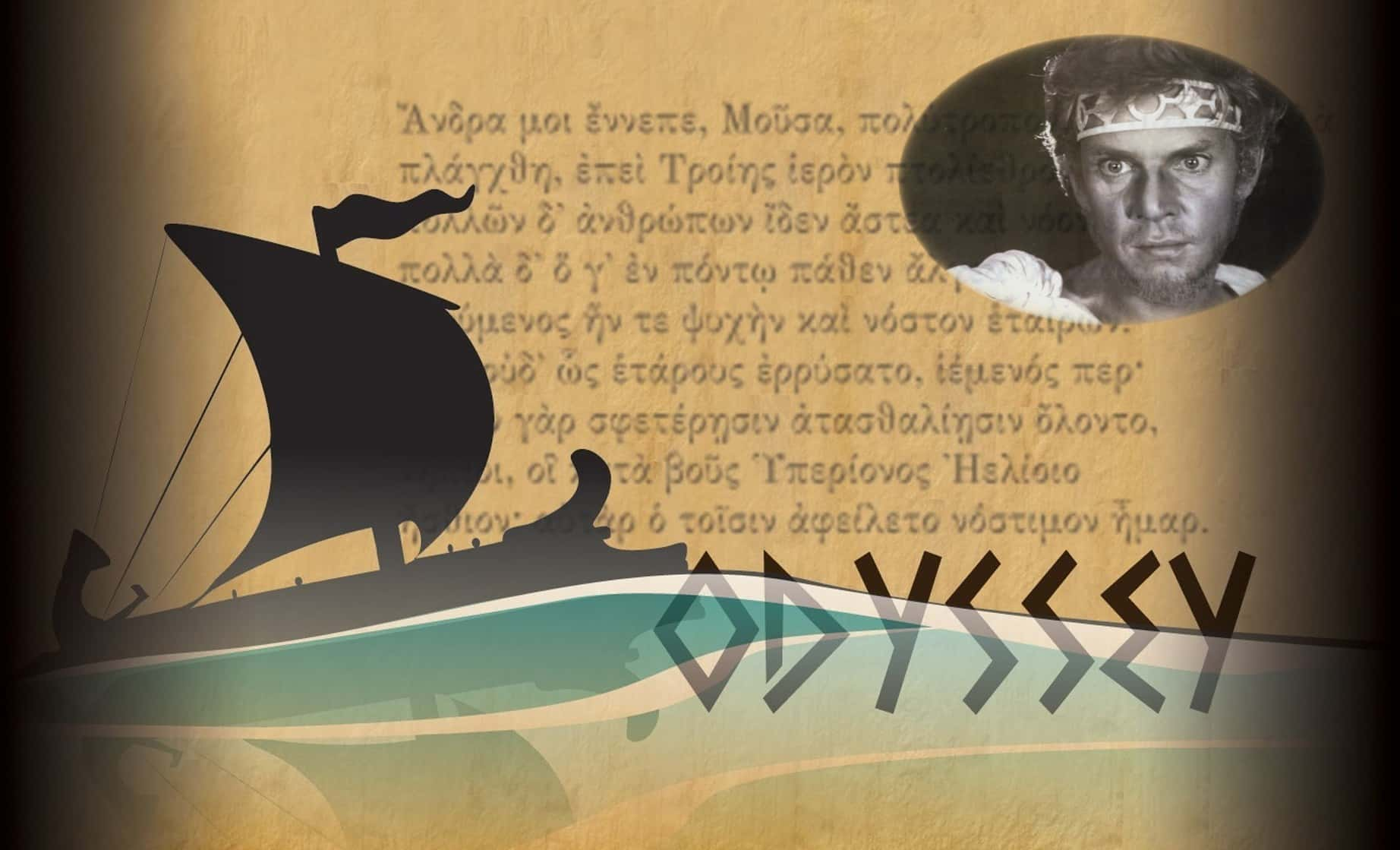
34. By the Numbers
As of 2015, there had been a total of 11,300 books challenged (AKA requested to be banned) in the United States alone. In 2014, there were 311 reported challenges, but that doesn’t count the number of challenges that weren’t reported. And they say nobody cares about books anymore!

History's most fascinating stories and darkest secrets, delivered to your inbox daily.
33. Banning the Boy Wizard
Harry Potter is probably one of the most popular and beloved characters in contemporary children’s literature, but that hasn’t stopped people from trying to get the series of books about him banned and removed from shelves for the last 20 years. It was one of the most challenged books of the 1990s, which is incredible, considering the first tome was only released in 1999. Other volumes in the series were challenged throughout the 2000s. Unlike most other book challenges, which were related to sex and/or language, the challenges over Harry had to do with fears that it would lead children to try and copy the spells and curses they read about in the book. Maybe somebody should have explained the definition of fantasy?
32. Religious Execution
In 1525, the scholar William Tyndale had this crazy idea that English people should be able to read religious texts in English and worked in secret translate and print the New Testament in English. The English Church, King Henry VIII, and English law had a different idea, and were quite determined to make sure that it only stayed available in Latin. Of course, only highly educated people could actually read in Latin, but that was kind of the point. Not long after the book was printed, Tyndale was arrested and then strangled at the stake and burnt for being a heretic. Ironically, Henry VIII eventually did change his mind and decide to allow an English translation, and his translation makes up 85% of the widely used King James Version of today.
31. Hiding the Dictionary
The Webster’s Collegiate Dictionary is frequently used by kids to study for spelling bees, but in 2010, a school district in California removed the dictionary from elementary school shelves after a parent complained that the definition of ‘oral sex’ was inappropriate. I have some bad news for that parent and the entire school district about the internet.
30. Bawdy Baudelaire
In 1887, 13 of the French poet Baudelaire’s poems from his collection Les Fleurs du mal were brought to court over inappropriate content. The court ended up banning 6 of the poems, stating that not only were they inappropriate, but they were too realistic. The judges were literally worried that people would get too turned on from reading the poems, and the book was viewed as wicked and pornographic.
29. A Fine Line
With over 100 obscenity charges, Henry Miller’s autobiographical book about his sexual exploits in France, Tropic of Cancer, is still considered scandalous nearly 60 years after its publication. The book, which is rather blunt in its descriptions of sex, has also been accused of being misogynistic, anti-semitic, and racist. Of course, banning a book doesn’t necessarily mean that people still can’t get a hold of the book, and get a hold of it they did. People went to a lot of effort to smuggle the book into countries where it was banned, mostly because they were curious to see what exactly was in it that made it obscene. Ultimately, the ban was overturned because the courts ruled that it was literature and not pornography. Porn by any other name...
28. A Moral Warning
Up until 1948, the Roman Catholic Church Authority compiled a list of books banned by the church for being dangerous to Roman Catholic faith or morals. The Index Librorum Prohibitorum (Index of Forbidden Books) was first created under the order of Pope Paul IV in 1559 and was issued 20 times by different popes. Authors on the list included Luther Calvin, John Milton, Samuel Richardson, and Voltaire, all of whom were highly influential, political, and controversial.
27. Honorable Work
The origin of the term censor dates back to Ancient Rome and the creation of the office of the censor. Both Roman and Greek civilizations believed that being a good ruler included influencing the moral lives of the people, and therefore, censorship was considered to be a worthy job.
26. Crusade Against Obscenity
Anthony Comstock fervently campaigned against obscenity—or at least whatever he thought was obscene. In 1873, US Congress passed the Federal Anti-Obscenity Act, otherwise known as the Comstock Act, which prohibited the mailing of any materials that were deemed “lewd, indecent, filthy or obscene.” Under the act, The Canterbury Tales, Arabian Nights, and Moll Flanders were all banned from the US mail for several decades. Much to the relief of Playboy subscribers everywhere, the laws are not generally enforced anymore, but technically, the ban on those books still exists.
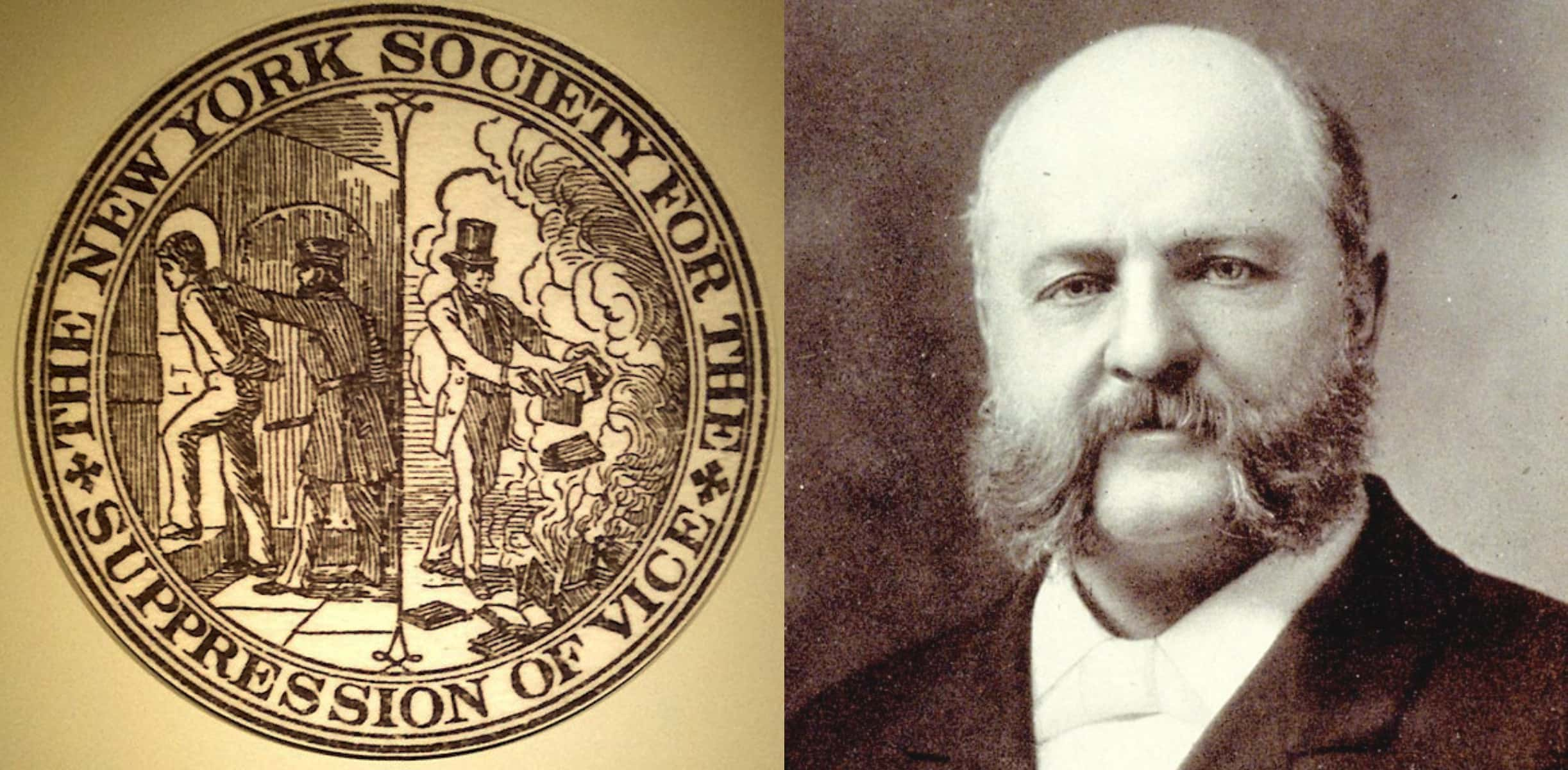
25. Take Them Back
In September of 2017, a librarian at a school just outside of Boston refused a gift of Dr. Seuss books from the First Lady of the United States. Her reasons for refusal were simple. As far as she was concerned, the books were “steeped in racist propaganda, caricatures, and harmful stereotypes.”—but then again, hey, so were early Disney movies and shorts. Over the years, Seuss has not been immune to censorship. His popular book Green Eggs and Ham was banned in China from 1965 to 1991 for its supposed “portrayal of early Marxism.” It wasn’t until after the author’s death that the ban was lifted. Is that really what they think children will get from that story?
24. Too Alternative to Teach
School authorities are known for removing books from school shelves when they think that something is inappropriate reading material for their students. In a New Hampshire school system, Shakespeare’s play Twelfth Night was banned because it violated a rule that prohibited teachers from talking about homosexuality in class. Parents were apparently bothered by the cross-dressing main character Viola and complained that it promoted an alternative lifestyle. Seriously though—if it was good enough to be performed at Whitehall Palace in England, why wasn’t it good enough for them?
23. Anti-Vampire
In 2014, a Cleveland area pastor attempted to get Twilight and other Young Adult supernatural romances removed from library shelves on the grounds that they were “demonic.” He was absolutely convinced that these books were “dangerous for our kids” and was horribly shocked to discover that such material was available to teens. The librarian sensibly pointed out that of the 1,500 books in the teen section, fewer than 100 books even fell into that category and maintained that books should not be banned because of politics or religion. Now, if they were to be banned for terrible writing, characters, and plotlines, then Twilight might be in trouble…
22. Consolidating Power
The Chinese Emperor Qin Shi Huang, remembered mostly as the dude with the creepy terracotta army, used book burning as a means of basically making his government the thought police. He specifically wanted to eliminate philosophy, poetry and history books so that nobody could compare him to his predecessors. I guess he figured if you can’t beat ‘em, erase ‘em.
21. Bonfire of the Vanities
In Florence in 1497, the religious fanatic Savonarola initiated the destruction of paintings and books because of their “wickedness.” In a fitting twist of fate, Savonarola himself was burnt at the stake the following year, along with all of his writings, sermons, essays and pamphlets. I guess you could say his ideas went up in smoke!
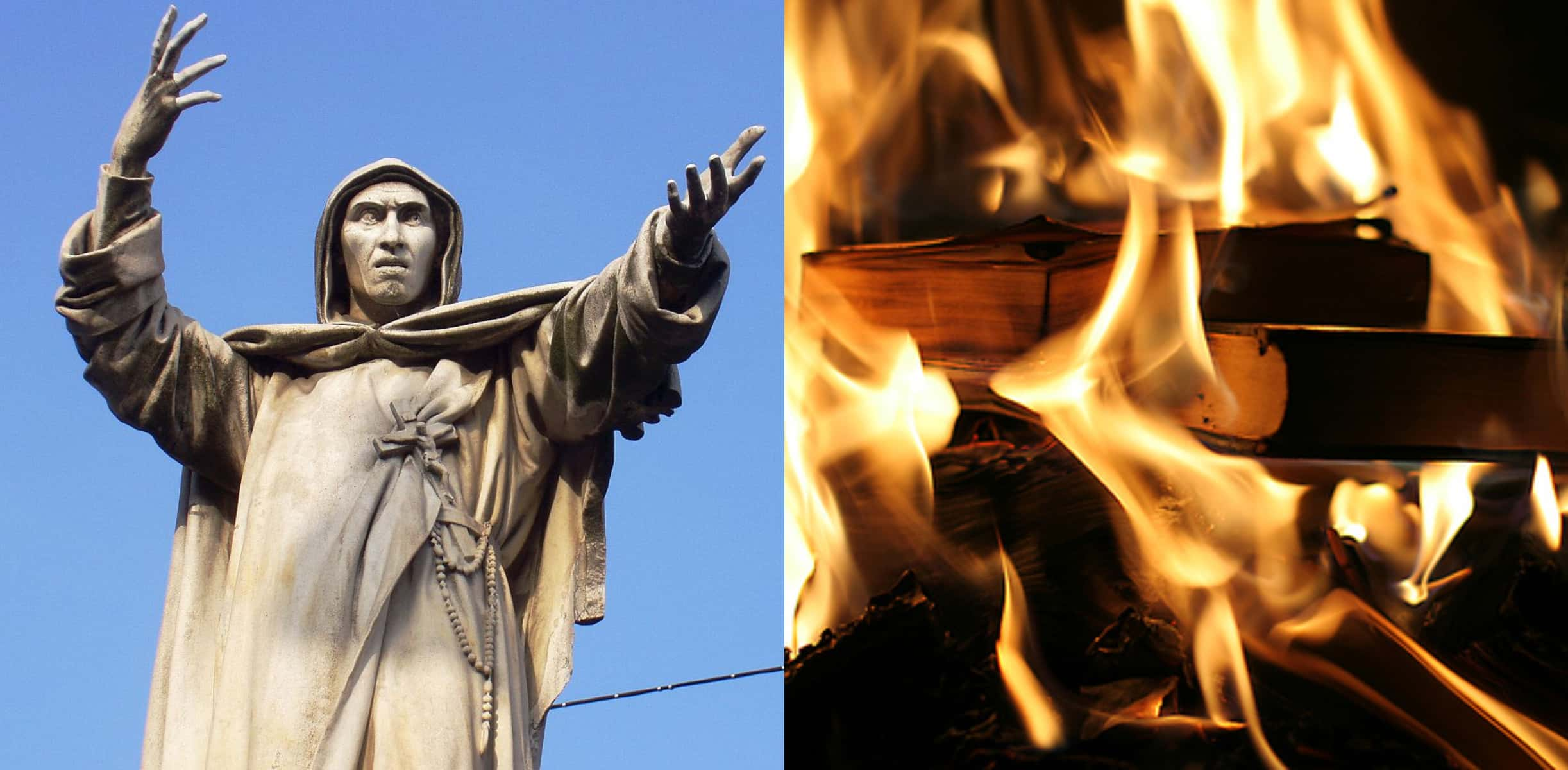
20. Dangerous Possession
Believe it or not, in some countries, owning a bible is not only forbidden, but owning one can lead to imprisonment, punishment, or execution. In North Korea, worshiping anything/anyone other than leader Kim Jong-un is illegal. If you’re caught owning a bible, up to three generations of your family can be punished. Thanks, Grandpa.
19. A Threat to Morality
Upon its release in 2011, the erotic novel 50 Shades of Grey was banned in Florida, Wisconsin and Georgia for its sexual content. People complained that it was pornographic, of demonic origin, and a threat to morality. A 2016 challenge claimed that it was “unsuited to age group” and that teens would want to try it. Newsflash—teens were already trying it long before the book was published.
18. A Family Friendly Version
A man by the name of Thomas Bowder was at the heart of one of the most famous incidents of Shakespeare censorship back in 1818. Bowder, an English physician, created what he called a “family friendly” version of Shakespeare by cutting out 90% of the stories. Thanks to his editing, the word “bowdlerizing” has become another word to describe censorship.
17. Mistaken Identity
What could possibly be offensive about a pre-school picturebook where the narrator asks various animals what they see (the answer is usually just other animals)? As a matter of fact, nothing is wrong with the book, but a Texas School Board banned it because because they confused author Bill Martin Jr. with another author of the same name, who had written a book about Marxism. If anybody had bothered to check, they would have found out that they were totally different people (with extremely common names, on top of that), but as it is, they leapt before they looked and protected children in Texas from dangers like the green bird and the purple cat.
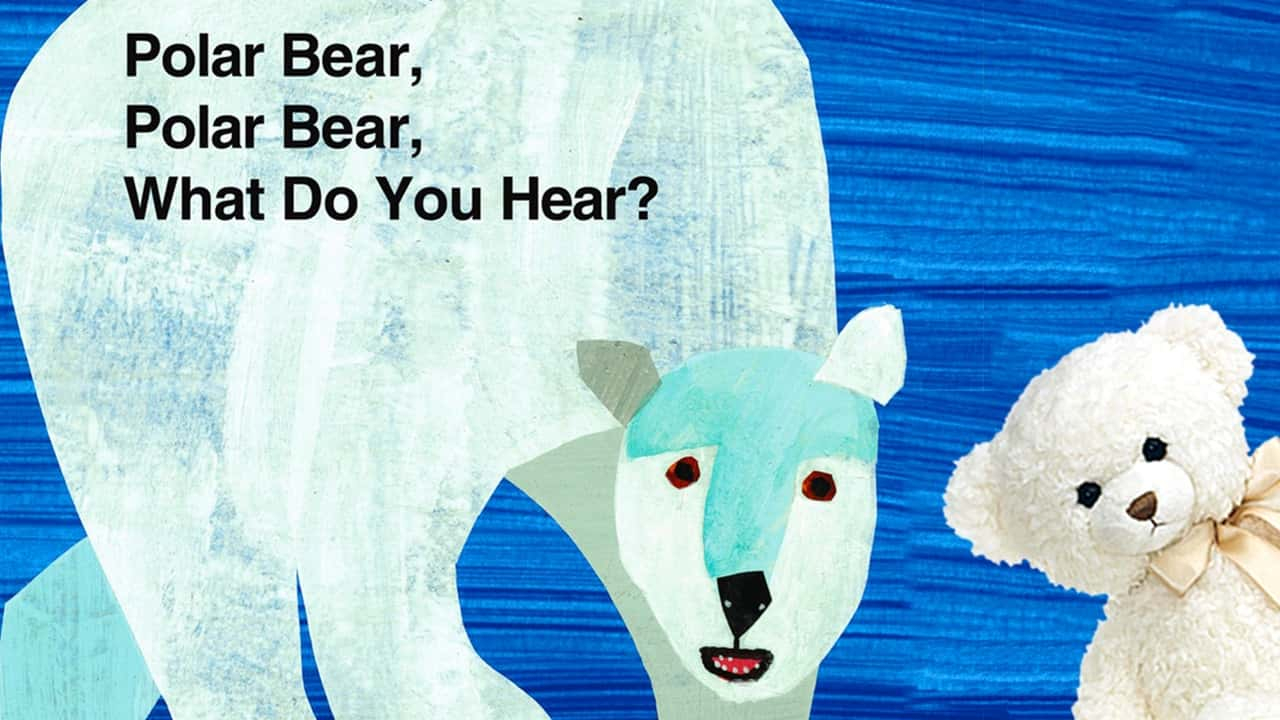 youtube
youtube
16. Granny’s Got a Drinking Problem
Fairy tales were originally conceived as moral tales that would teach the audience a lesson. Little Red Riding Hood is usually assumed to be a story about stranger danger, but school officials in California got something different out of it. In the edition of the story illustrated by Trina Schart Hyman, Red had a bottle of wine in her basket for Granny, which Granny happily drinks. Naturally, they jumped to the conclusion that the book promoted drinking—gasp, among grandmothers, no less—and that was just not something that they could abide. Lying, scheming, grandma-eating wolves, on the other hand, were apparently no problem at all.
 Inside Of A Dog
Inside Of A Dog
15. Forbidden Fruit
Killing a book refers to blocking it before it can ever be published. Killing a book also makes sure that people pretty much can’t access it at all, and if it is printed, it will probably never be reprinted. Crispin Miller, a media studies professor at New York University, founded The Forbidden Bookshelf to republish these long-forbidden titles. Most of the books are alternative accounts of some of history’s most contentious issues, and range from material about organized crime to secret CIA operations. Whether or not these stories are true or if they are simply crazy conspiracy theories is a completely separate matter, but thanks to digital publishing, you can read them and decide for yourself.
14. The Devil’s Work
At one point in your childhood, most of you probably read E.B. White’s classic children’s book Charlotte’s Web. That is, as long as you didn’t live in Kansas in the 1950s. In 1952, a parent’s group decided that a book featuring talking animals had to be the work of the devil, and to suggest that any creatures other than humans could speak was sacrilege. Perhaps they didn’t understand the meaning of fiction?
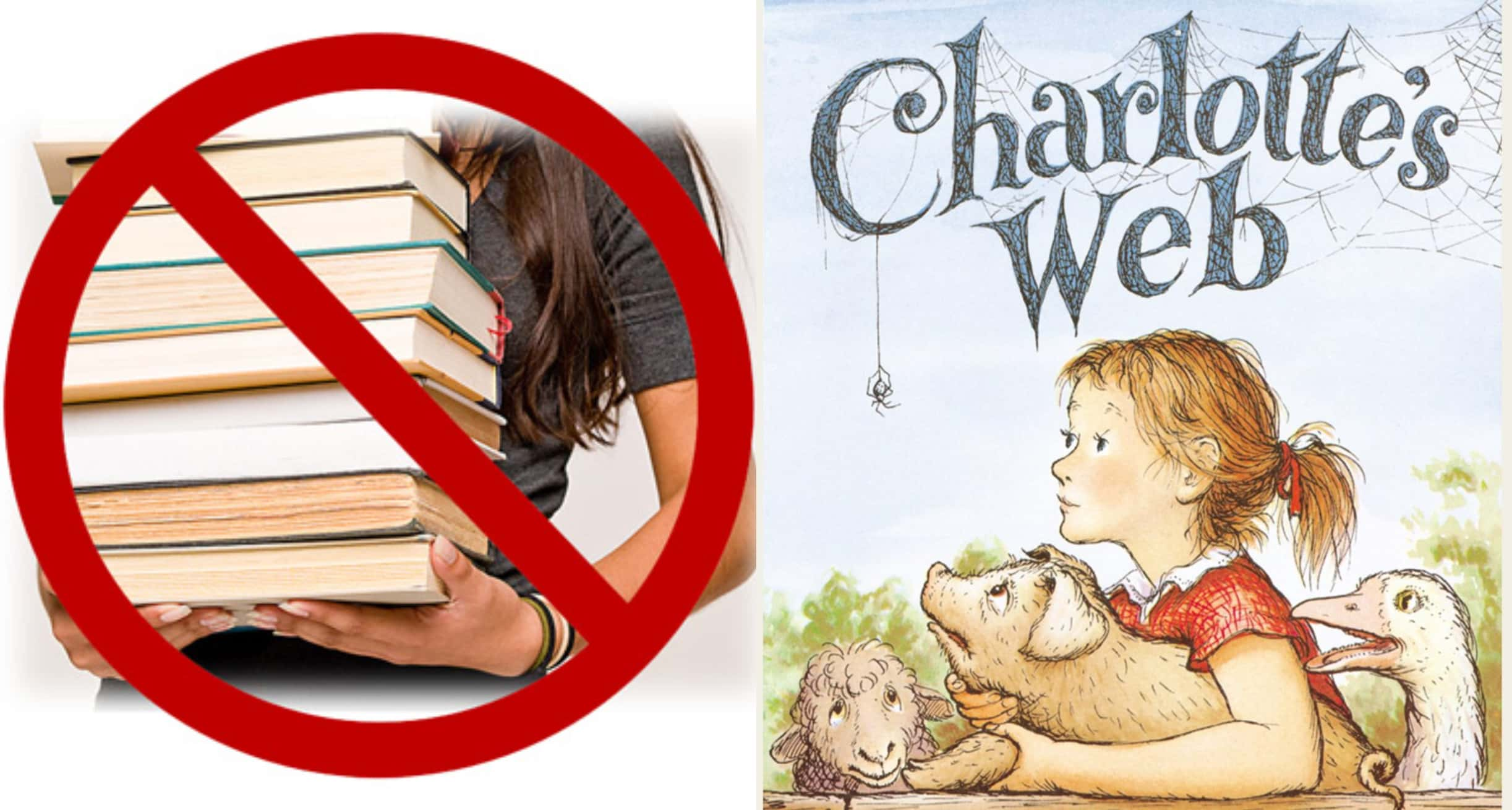
13. Critiquing Communism
George Orwell’s famous book Animal Farm was banned in the U.S.S.R. until the 1980s because of its criticism of communism. The book has also been banned in several other countries around the world, and most recently in China, where Orwell’s other novel, 1984, and the letter “N” were also banned in an effort to suppress the people’s ability to disagree with the government.
12. Ground-breaking Pornography
Vladimir Nabokov’s famous book Lolita was banned in France, England, Argentina, New Zealand, South Africa, and in some parts of the US, just a decade after publication. The story, which was about a grown man’s desire for a young girl, was published by a pornographic press and immediately stirred controversy. Of course, nothing fuels sales of a book quite like saying it’s inappropriate, and not surprisingly, the book became a bestseller. Today, it’s known as one of the most ground-breaking books of the 20th century, despite being dubbed by one reviewer as “highbrow pornography.”
11. A Poem and a Mistake
In the year 8 AD, Ovid, who was pretty much rock-star famous at the time, was banished by the Roman Emperor Augustus for what he claimed was nothing more than “carmen et error” (translated, it means a poem and a mistake). The poem, later found to be titled The Art of Love, was kind of seen as promoting adultery, which directly contradicted the Emperor’s stance on Roman morality. As for the mistake, while exactly what it was isn’t known for sure, popular theories say that it may have been Ovid’s political opposition to the emperor, and particularly authoritarianism, or that he’d engaged in or witnessed adultery, and taken part in incest with his daughter or his granddaughter. Spicy! Many scholars also believe that he was being punished more for the mistake than the poem and being pissed off about the poem was just a pretext for whatever the real reason was for banning him.
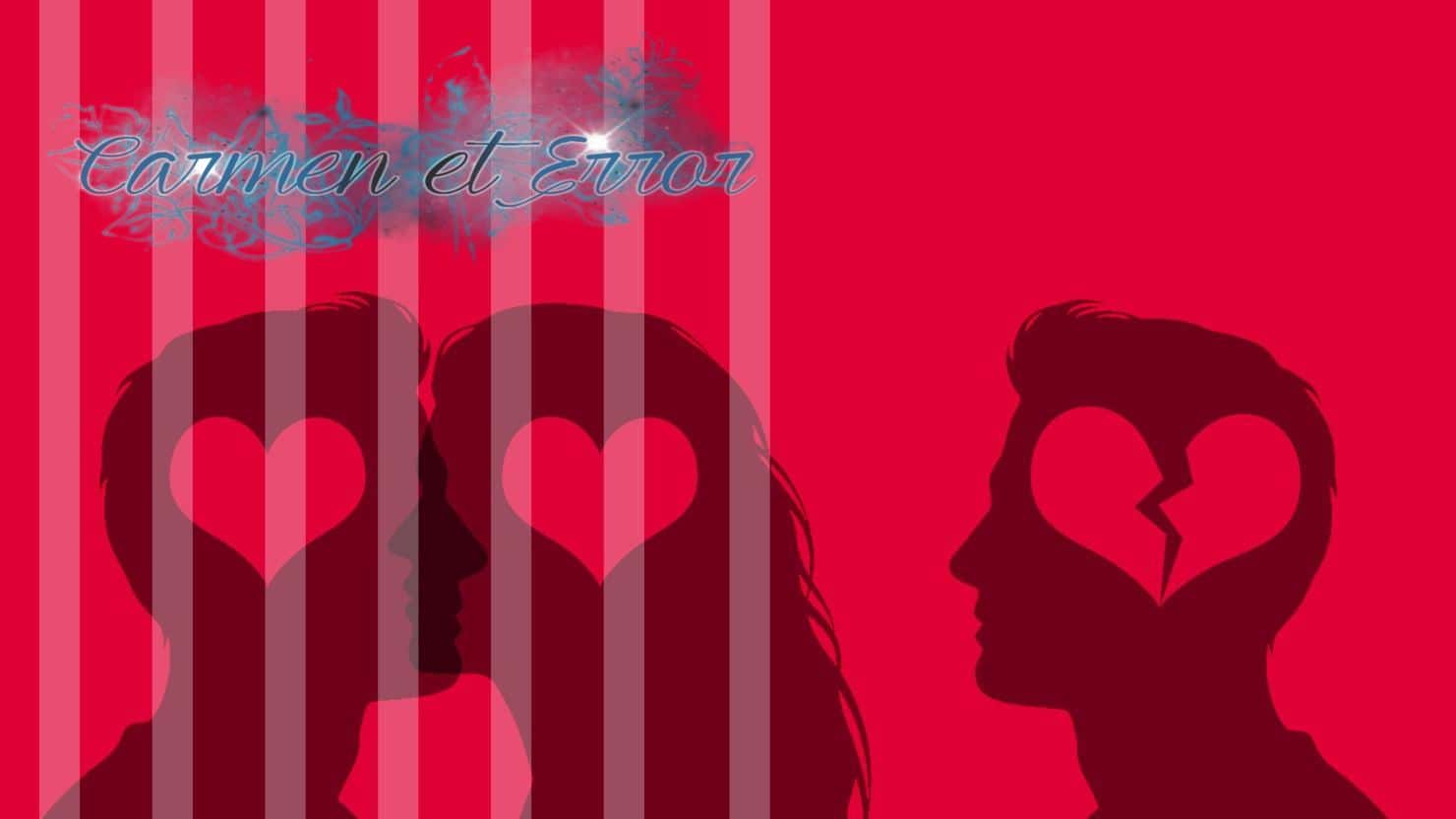
10. Banning a Book
Simply requesting that a book be banned does not automatically mean that it’s banned. In order for a book to be banned, someone has to first file a complaint with the library. When the library receives a complaint, a committee or the library board will review the book and decide whether or not the complaint is totally stupid or if it has some merit. Depending on what they decide, the book is either removed from shelves, or left alone. Amazingly, it doesn’t end there. If one party disagrees with the decision, they can escalate it all the way to the Supreme Court. The Supreme Court does have the final word on the subject, so whatever they decide, both parties just have to live with it.
9. American Contraband
When James Joyce’s Ulysses was first serialized between 1918 and 1920, it was considered either genius or obscene, depending on who you asked. Joyce’s contemporaries like Hemingway, T.S. Eliot and Ezra Pound were full of praise for the book, but others, like the New York Society for the Suppression of Vice, wanted it banned because of a scene where a character pleasures himself. For over a decade, the book was illegal in the US, but in 1933, the court case United States v. One Book Called Ulysses lifted the ban. Considering that a lot of people who read it didn’t really understand it anyway, the concern over the book was probably a little bit overblown.
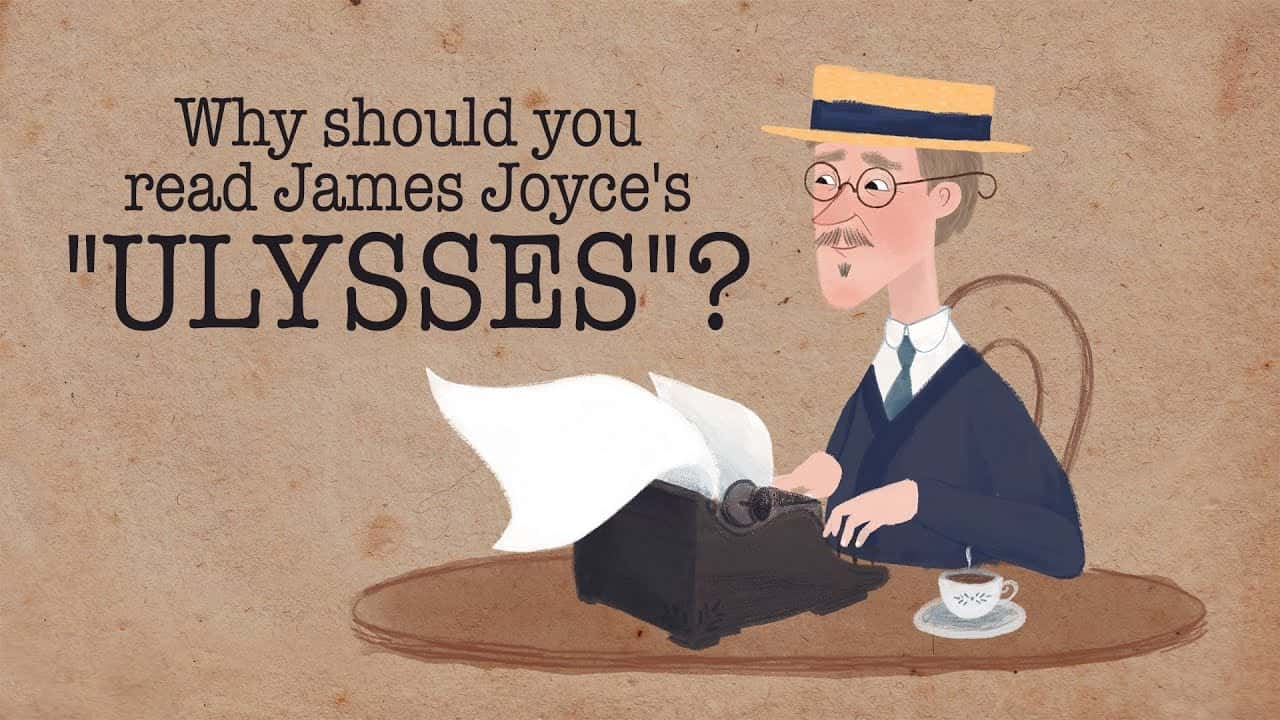 youtube
youtube
8. Banned in Tarzana
Ironically, Edward Burroughs’ classic novel Tarzan was pulled from library shelves in the town of Tarzana, California because they didn’t believe that Tarzan and Jane were married when they started living together in the trees. As ridiculous as it seems to have to even argue the point, Burroughs’ estate defended the book by insisting that Jane’s father had acted as a minister in the jungle and had in fact married them.
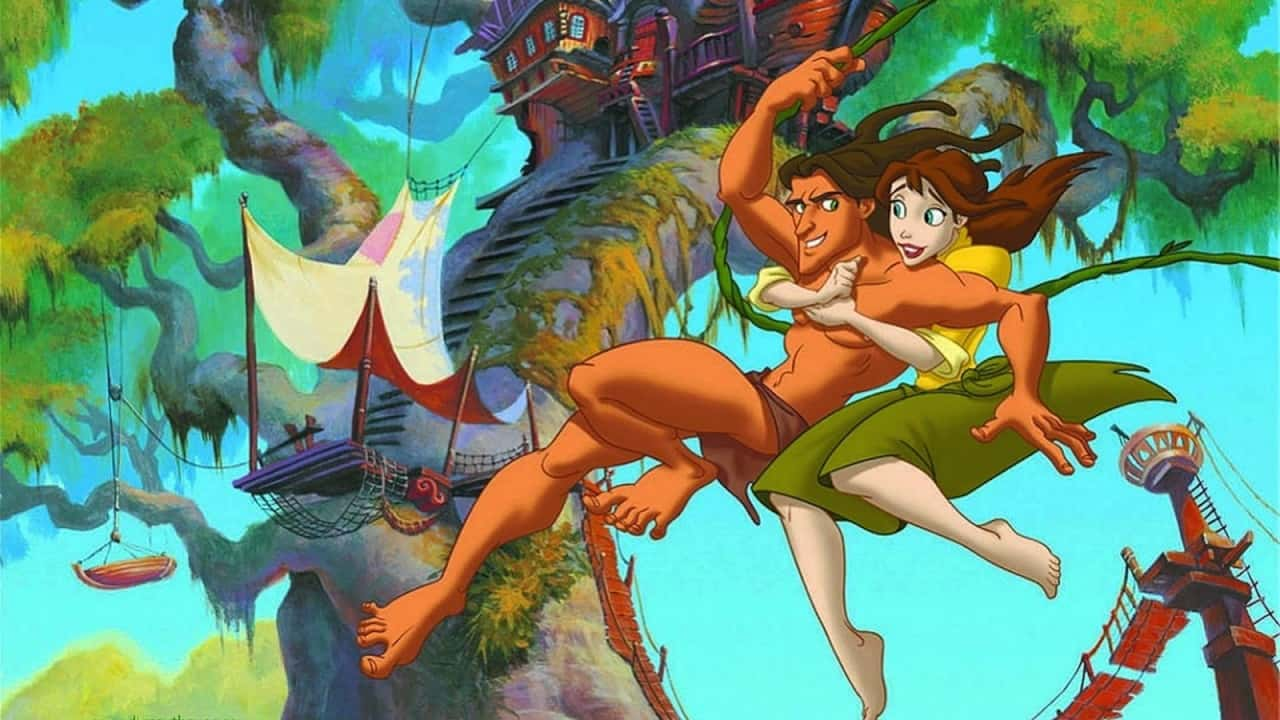 youtube
youtube
7. This Book May Be Offensive
If you were recently a kid or have kids, you’re probably familiar with Dav Pilkey’s Captain Underpants series of books about a couple of elementary school boys who love pranks and create a super-hero cartoon character called Captain Underpants. Amazingly enough, in 2012, the book was at the top of the most challenged list, even beating out 50 Shades of Grey. Parents complained that the book contained offensive language, and inappropriate content for the intended age group. The book contains no sex, no graphic violence, no drugs and no bad language, but apparently being able to make kids pee their pants laughing is reason enough to ban something.
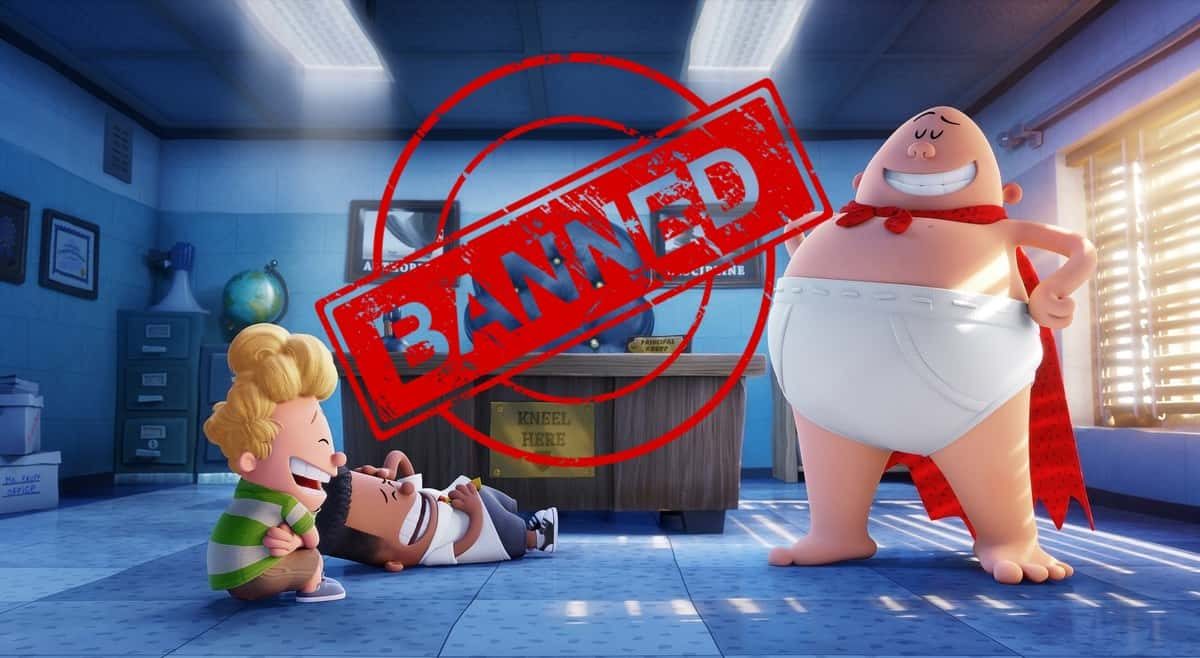
6. It Wasn’t the Drugs
Lewis Carroll’s book Alice in Wonderland has a long history of censorship, largely for its supposed promotion of drug use. In the story, Alice repeatedly eats magic mushrooms (they make her grow and shrink and mess with her mind) and the caterpillar smokes a hookah pipe. In the 1960s, rumors started circulating that the entire book was one giant opium trip, but there’s no evidence to prove that the author ever used drugs. Funnily enough, the drug use was actually not the reason that the book was banned in China. General Ho Chien, the governor of Hunan province was completely offended that not only did the book humanize animals by giving them the ability to speak, but that in doing so, it placed them on the same plane as people. If you ask me, it’s the animals who should have been offended.
5. Prison Reading
The idea that inmates in a prison might be prohibited from reading certain books isn’t all that strange, but the list of what is and isn’t allowed in Texas prisons is a bit bizarre. The list of banned books includes The Color Purple (because of incest), Freakanomics (because it could cause offender disruption), and Where’s Waldo. The particular Waldo book in question is banned because it contains stickers, though why that’s a problem is anybody’s guess. On the other hand, the list of books that are allowed includes Hitler’s Mein Kampf and James Battersby’s The Holy Book of Adolf Hitler. Priorities, right?
4. Preemptive Banning
Usually, a book gets banned after it’s written, but young adult author Richelle Mead has the honor of having her entire Vampire Academy series banned before she even finished writing it. The Stephenville Independent School District was so gung-ho about censoring books with sexual content that they literally jumped the gun and banned the yet-to-be-published fifth and sixth books in the series. They must have been using a crystal ball to be able to determine the content of books that hadn’t even been written yet!
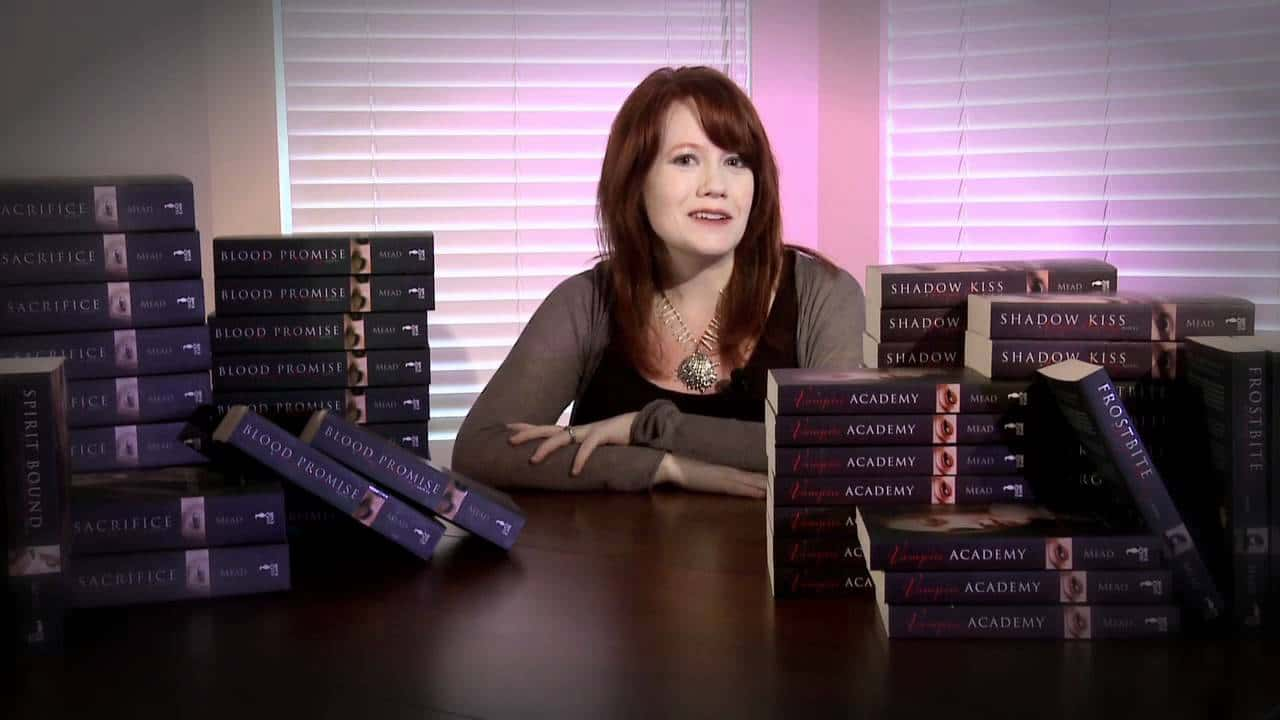 youtube
youtube
3. Such a Downer
The Diary of Anne Frank is one of the bestselling and most well-known books in the world, but it’s also one of the most frequently banned/challenged books. Parents have demanded the removal of the book from school curriculums because of its “pornographic passages” and for Anne’s descriptions of going through puberty. In addition, the Alabama State Textbook Committee vetoed the book because it was too depressing. If that’s a reason to ban a book, I better not see Marley & Me on the shelves there.
2. Sexual Spiders
Beloved children’s book author Roald Dahl’s books have often faced challenges over the years, but one of the strangest reasons for banning a book was the reason that James and the Giant Peach was removed from shelves in Wisconsin town. Aside from the usual complaints about the use of foul language, references to drugs and alcohol, and racism, this particular complaint alleged that a spider licking its lips could be interpreted as sexual. By whom? Other spiders?
1. Blasphemy!
Sometimes, the contents of a book are so controversial that not only is it banned, but the author’s life is in real danger. This was the case for Salman Rushdie’s 1988 novel The Satanic Verses. The book was banned in several countries, including India, Bangladesh, Egypt, Iran, and Pakistan. The Iranian leader Ayatollah Khomeini even sentenced him to death and put his name on a wanted list, to be executed on charges of blasphemy against Islam. The author ended up going into hiding for several years, moving from place to place with the protection of bodyguards. The Ayatollah even extended the fatwa to anyone involved with the publication of the book, which led to an attack on one of the book's translators, a Japanese man named Hitoshi Igarashi, who was stabbed to death by an unknown assailant. Numerous others involved in the publication of the book were injured in similar attacks.
Sources: 1, 2, 3, 4, 5, 6, 7, 8, 9, 10, 11, 12, 13, 14, 15, 16, 17, 18, 19, 20, 21, 22, 23, 24, 25, 26, 27, 28, 29, 30, 31, 32, 33, 34, 35, 36, 37, 38, 39, 40


